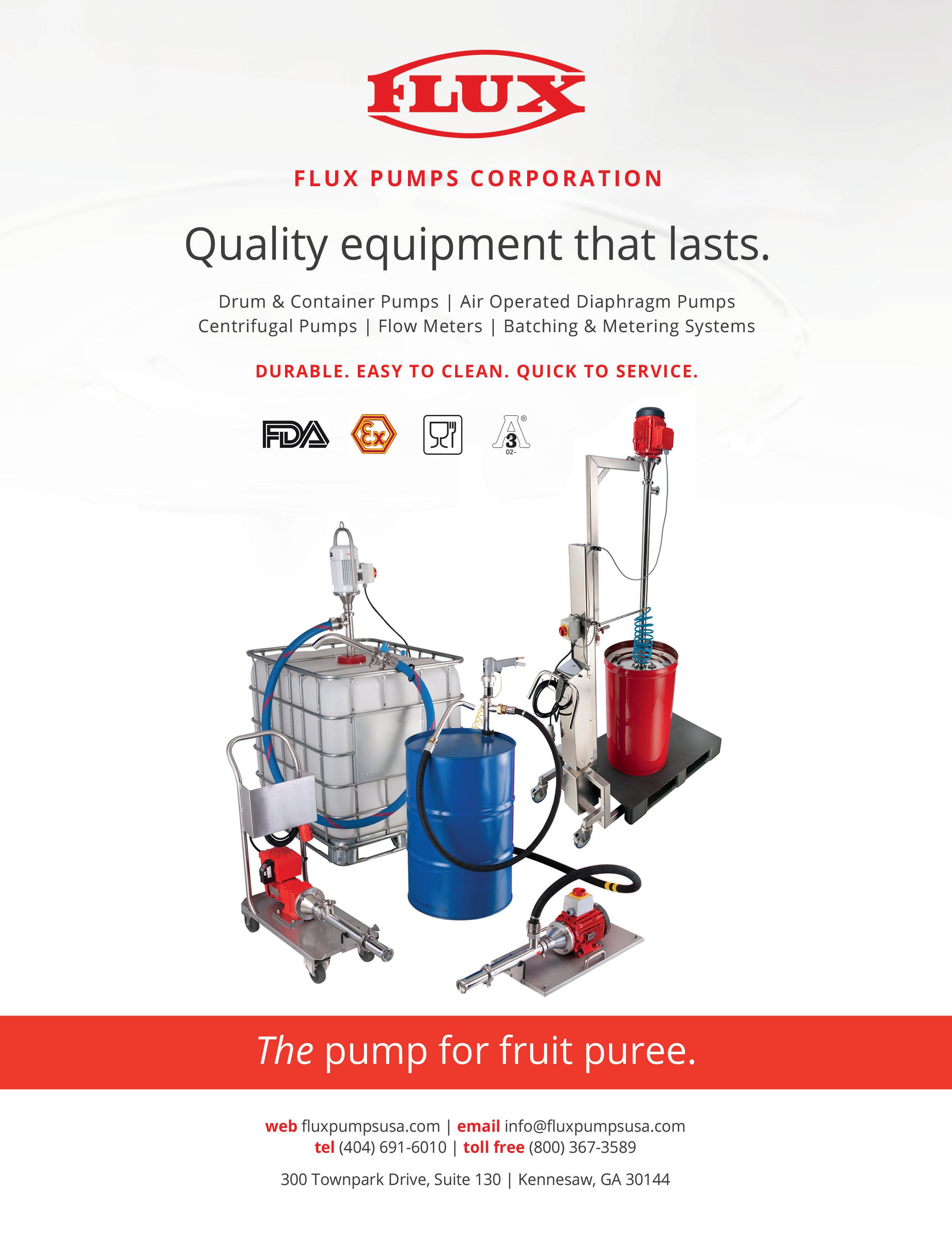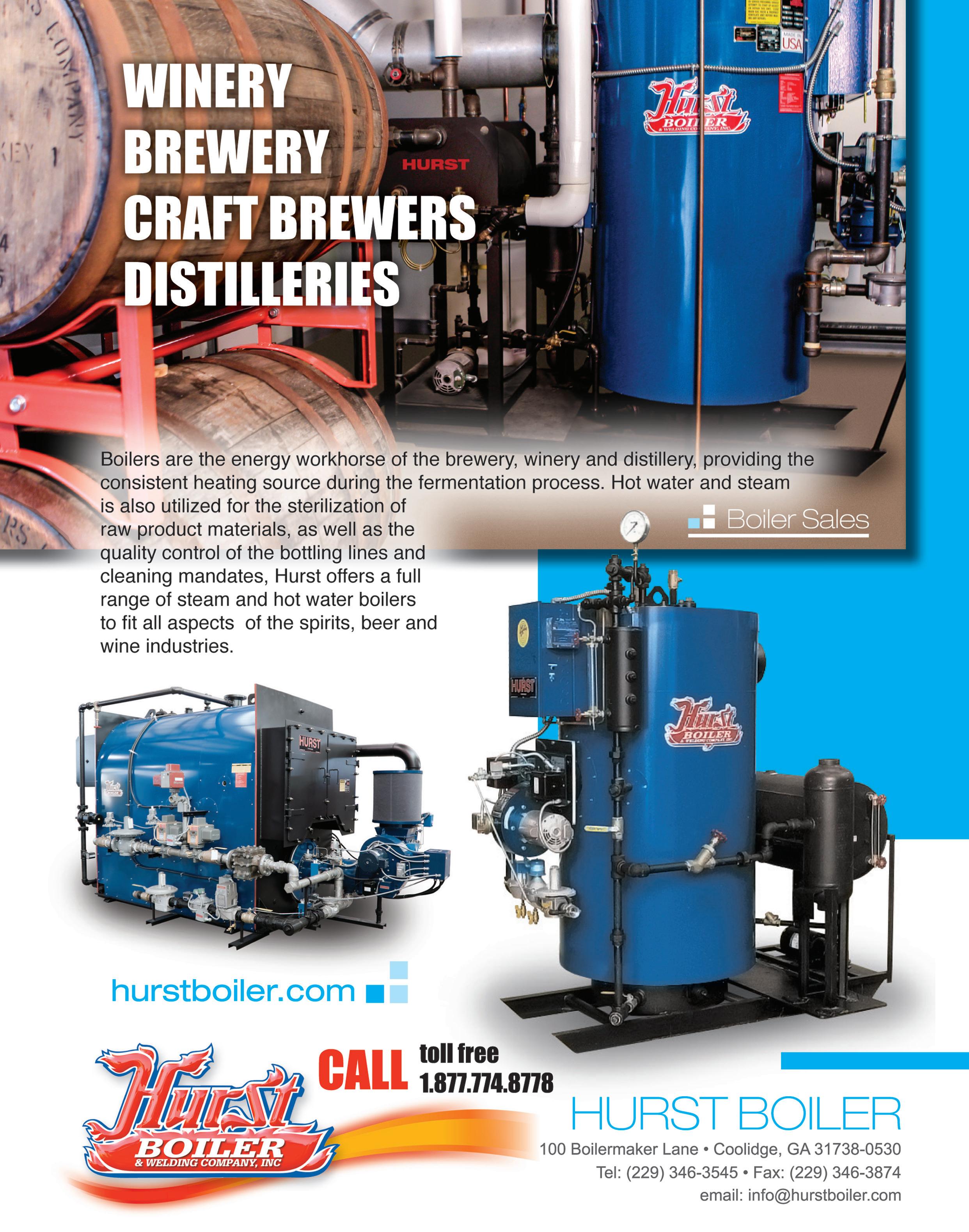




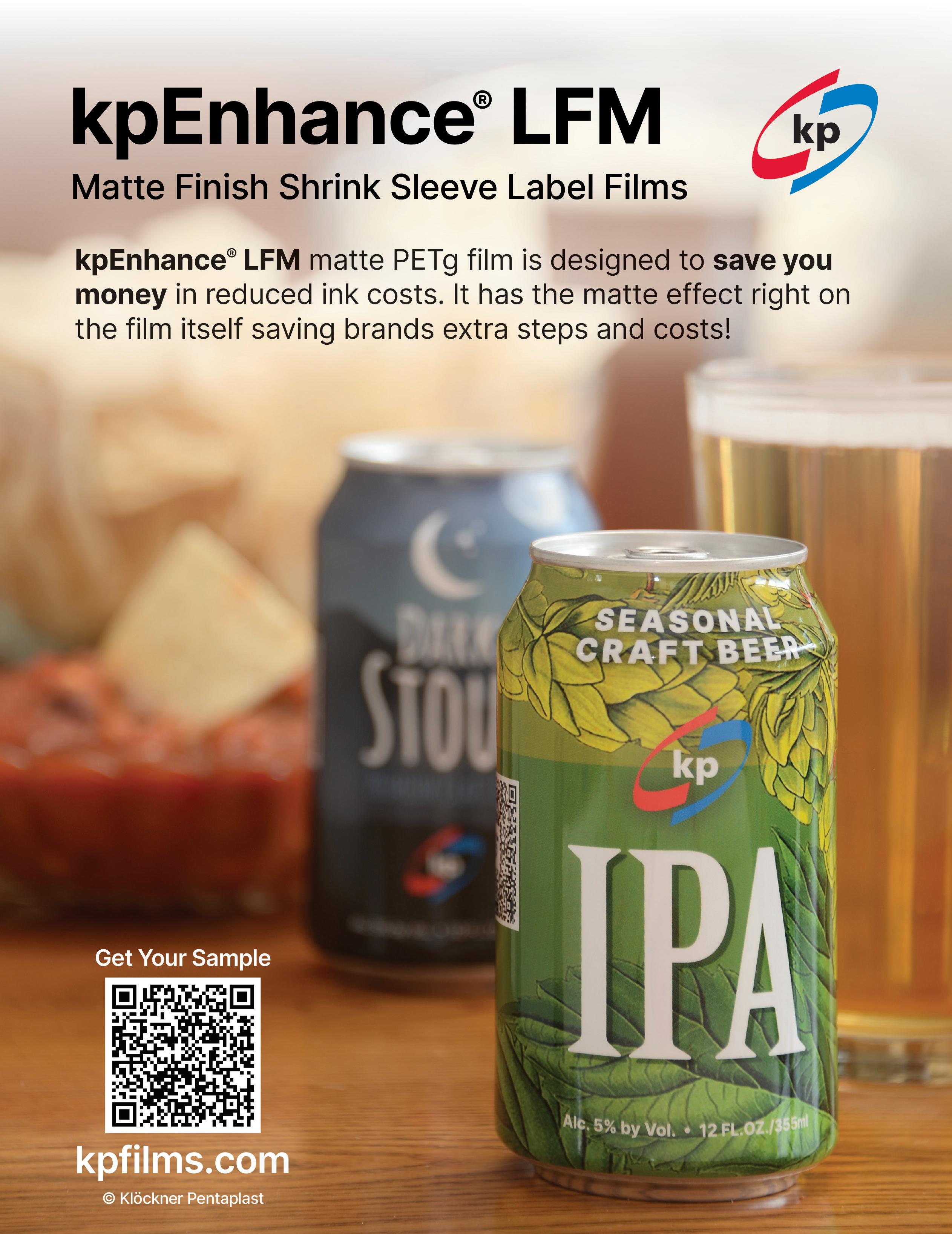




Craft Beverage Practice
Rene Lacad - Lacadverstiment
Jake Ahles - Morel
- Bar &
Mantra
Distillery Now Consulting LLC
Bricker Publishing Division of: Bricker Group, LLC 1409 13th Street North Humboldt, IA 50548
E-mail: editor@BrickerPublishing.com
Website: www.BrickerPublishing.com
BEVERAGE MASTER targets the Craft Beverage market and located in Fort Dodge, Iowa. BEVERAGE MASTER is printed bi-monthly and distributed to the most qualified buyers. Opinions expressed in BEVERAGE MASTER are not necessarily those of the publication personnel, but of the writers who contribute stories to BEVERAGE MASTER.
ERROR RESPONSIBILITY: BEVERAGE MASTER is responsible only for the cost of the ad for the first incorrect insertion of the ad. Each insertion of an advertisement is proof of publication and it is the responsibility of the advertiser to check the correctness of each insertion. The publisher shall not be liable for slight aesthetic changes or typographical errors that do not lessen the intent of the ad. No adjustment can be made for advertisements not published. In the event of any error in an ad for which the publisher is liable, the liability is limited to adjusting that portion occupied by the error in relationship to the entire value of the advertisement. No adjustments will be made 30 days after initial insertion date.
All contents of BEVERAGE MASTER are Copyright © by Bricker Group, LLC
CHANGE OF ADDRESS: Please send new address and phone number along with “BEVERAGE MASTER” mailing label or email changes to editor@brickerpublishing.com




By: Mark Colburn
Don’t underestimate the importance of the bar/beer tender as the initial brand ambassador which is a critical piece to your marketing and sales plan, it is highly recommended that these front-line employees be consistently trained and evaluated. I suggest providing sales training for this team including probing (for customer wants/needs), food pairing and a sales incentive based on volume.
To provide Off Premise Point of Purchase consumer recall, I also suggest a retail package display be situated in a high traffic area within the tasting room for immediate visual recognition (and takehome sales!).
Several of my clients complain that their tasting/ tap room sales and traffic are down or flat. As a result, they often try promoting with trivia or bingo
nights in an attempt to generate patronage. These may help somewhat. An alternative to this, that I like, are car shows at the tap or tasting room, brewery, distillery, or winery. There are thousands

of “Gear Heads” who have muscle cars and love to bring them to car events. By conducting a local car show featuring muscle cars and adding a band or music, you now have an event or platform to promote that will attract potential customers to your venue. Do not discount the Gear Heads and car club members either. They know dozens, if not, hundreds of people like them who love quality beverages. I always take care of participants with six packs and/or sufficient samples to thank them and ambassadorize them. You might consider allowing them to have their monthly club meeting at your venue on a slow day during the week. Their cars in your parking lot will attract incremental “traffic.” Let us look at some ideas I have successfully executed that significantly built sales in multiple channels.
While conducting a territory business review with a regional Walgreens director, I asked him if he thought the store and district managers would like to go on a “field trip” to a few craft beer tasting rooms and breweries to learn about the industry. He jumped at the idea, so I contacted three craft brewers – Pyramid (then in Berkeley, CA), 21st Amendment and Anchor Brewing. I knew their

senior management teams and asked if they would pool their resources to rent a bus to take this group to their breweries and brew pubs. They were 100% in. So, I invited a full district’s store managers and three regional district managers. They all arrived on time in San Francisco where we took off to the 21st Amendment brew pub. While at 21A they met the owners and sampled a variety of their beers. We then set off to Pyramid where they got a full tour of the brewery and then sat down in the conference room for a presentation I made on the craft beer and cider industry. I fielded many questions from

the group before breaking for lunch at the brewery.
There they got to meet the middle and senior sales management team from Pyramid. After lunch we headed back to the City to Anchor Brewing where they received a warm welcome, a historic tour, and a sampling of Anchor’s finest. The tour ended with a group photo high atop the brewery from Fritz Maytag’s private penthouse. This was truly a treat for the group as this is never open to the public. From the large penthouse cocktails were served from Anchor’s newest spirits division. Afterwards we returned to one of the main stores for off-loading.
The above concept served a variety of uses from educating and “ambassadorizing” critical individuals within the Off Premise channel to building key relationships with “players” who really make a difference. The tap room was the centerpiece for this effort. The results were excellent. All three brands received additional SKU placements throughout the large Northern California division while Anchor Brewing was able to negotiate a major pallet, 12-pack program resulting in thousands of cases in

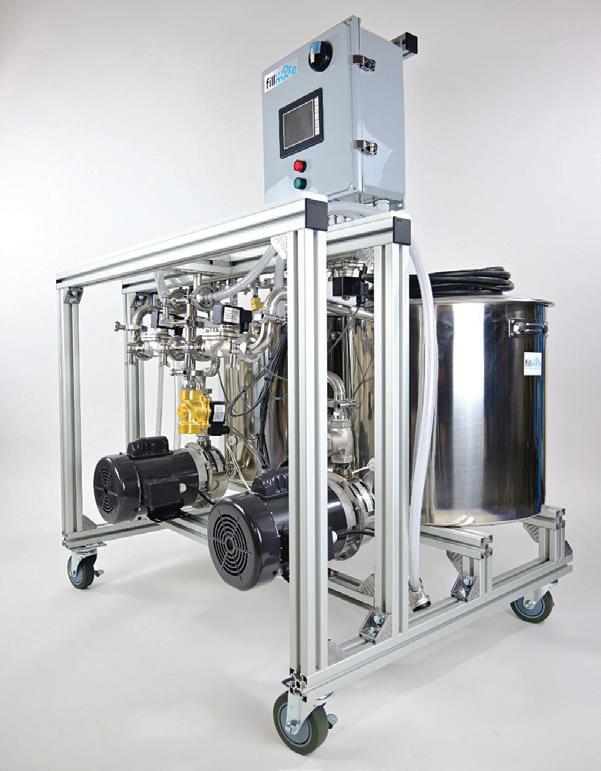
incremental revenue. Now, let us look at something less expensive.
As you most likely know, your distributor teams meet once a week for a sales meeting. I have run over eight hundred of these meetings in my career and can tell you that many can be downright “dry.” My suggestion to our suppliers was to use their tap room or brewery for a future sales meeting venue. This way, your team will have your coveted On and Off Premise salespeople as a captive audience, ripe for “brand ambassadorization.” Once you procure a date for a future meeting, PREPARE for this opportunity. Preparation and REHEARSAL are imperative for this rare chance to positively influence your audience. On preparation, I would have your best presenter give a detailed summary (10-12 minutes maximum) on your company’s marketing story. I caution against making this “dry” and am always in favor of what I call, “Fun-kifization.” This is a “Markism” that simply means to make the effort fun and creative. After your presentation I would introduce the sales incentive appearing in the next
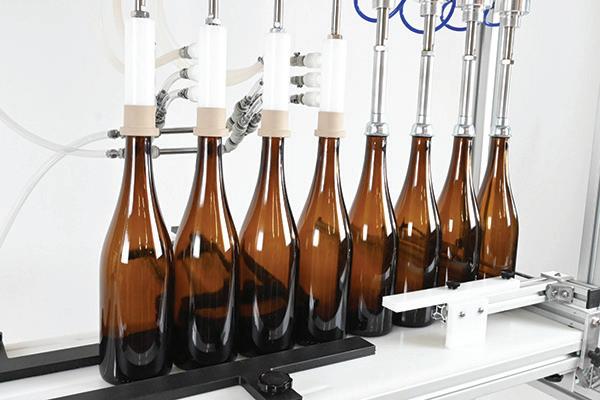

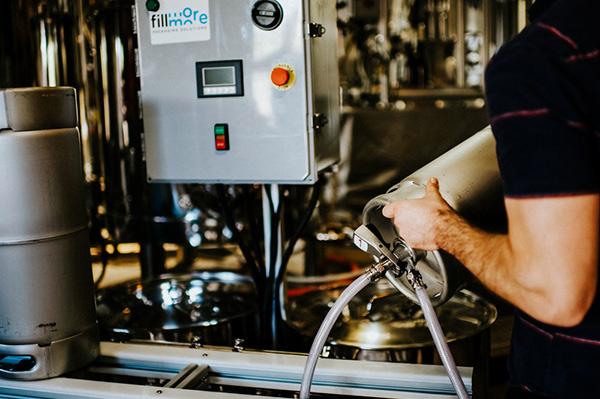
month’s plan (this needs to be pre-negotiated with the distributor sales management) and be certain they understand it and the expectations. I also recommend a first week “jump start” bonus that will get your incentive out of first gear and ahead of the multiple suppliers all vying for this sales team’s attention. The meeting should end with the announcement that each salesperson in attendance will receive a free six or four pack or bottle for them to sample at home at their leisure.
After your wholesaler sales team has sampled your nectars and experienced your “brand DNA” you are in a perfect position to further ambassadorize them a few months down the road with a unique incentive. I have written many supplier sales incentives that follow up on the tap room/brewer/winery/ cidery/distillery experience. To further exploit the tap/tasting room I recommend creating a monthlong sales incentive around distribution and/or volume increases for the winning sales division and their manager to be treated to a VIP session in your tap/tasting room. This VIP experience includes an intimate Q&A meet and greet with either the owner, brewer, distiller, vintner (or all of you!) and the winning division (typically divided into 4-5 salespeople and one division manager). The “pay out” includes a free dinner for each winner and assorted samplings of your nectars poured by one of your most senior sales team or owners. Recognize the unique opportunity this presents for your brand and future sales. A side benefit of this incentive is the “talk value” it has with the entire sales team as the winners will “brag” about their experience (at work) which keeps your brand top of mind post incentive while teasing the losers who will want to win and experience the next one. You will also benefit from word of mouth as the winning salespeople talk up your brand in their accounts. These people are influencers and are often asked where to go for a good drink. You can track this effort by training your bar staff to ask how a customer heard about your brand when they visit. The bar staff can record this and share in your weekly staff meetings.
Always remember that people buy AND SELL for people and BRANDS that they like.
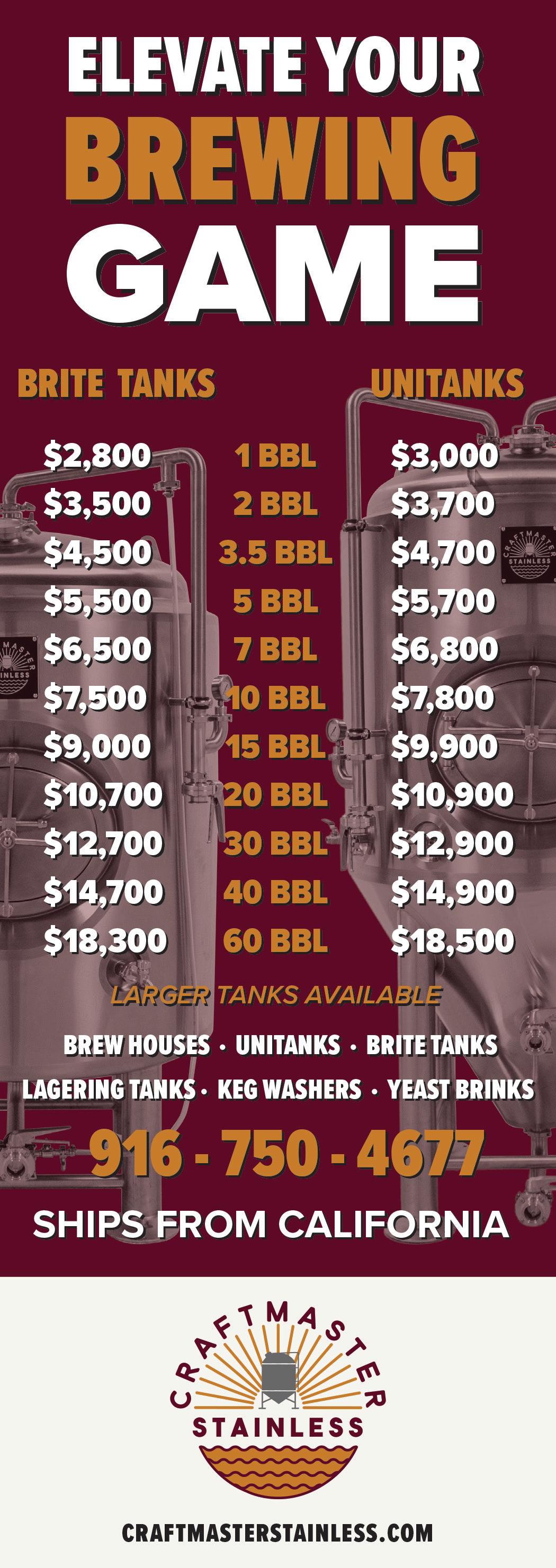


By: Greg Kerr
In the competitive world of craft beer, where new breweries seem to pop up every day, building a strong brand identity is crucial. Your brewery is more than just a place to get a drink or food. It's a local gathering and community space with a story, a personality, and opportunities to form bonds. Merchandise can be a powerful tool to elevate your brand and connect with your customers on a deeper level, fostering a legion of loyal fans who will not only return for your latest seasonal brew, but will proudly represent your brand wherever they go.
Breweries stand in a unique position compared to other local restaurants or small businesses because people actively want to identify with the brand and find alignment. You become their safe hangout
spot that they can formulate new experiences from and find community.
There are some common brand building pieces of merchandise that we see on a regular basis from breweries, and all are centered around focusing on the customer experience and elevating it for them.
Enamel pins and challenge coins can be used for a lot of different experiences.
● Help celebrate seasonal offerings.
● Serve as rewards for customers unlocking new experiences, e.g. someone has tried X amount of seasonal brews and gets a pin which unlocks discounts or early tastings, etc.

● As a loyalty club identifier.
● Brand logo pins for placing on hats, jackets, totes, etc.
● Challenge coins similar to how people in the military will check to see if you have it on you and if they do, they get a small reward.
● Pin sets to help bolster the brand imagery.
● Fun designs linked to the branding or seasonal offerings.
Forget cheap t-shirts with your logo slapped on them. People are inundated with generic promotional shirts and tote bags that end up forgotten in a drawer or worse, tossed in the trash. When it comes to brewery merchandise, quality and creativity reign supreme. People want unique, high-quality items that they'll be proud to wear or use. This
means investing in customizable merchandise that reflects your brewery's personality and values. Instead of just having your logo on everything, find fun ways to reflect the vibe of the company in a way that people want to represent it and use it. The key in effective marketing is providing value to not only yourself, but to your customer by creating something unique that aligns with your brand.
Brand Ambassadors: Walking Advertisements That Generate Buzz. Eye-catching hats, pins, keychains, tote bags, shirts, or pint glasses become walking advertisements for your brewery. Every time a customer wears a comfy tee featuring your name or uses a stylish tote bag with your art, they're spreading brand awareness. Imagine a customer sporting your brewery's hoodie at a music festival or a couple using your pint glasses at a backyard barbecue – that's free advertising that reaches a whole new audience.
Increased Customer Loyalty: Fostering a Sense of
Community. People who love your beer will love to represent your brand. Merchandise creates a sense of community and belonging, fostering stronger customer loyalty. Die-hard fans will be eager to snap up a limited-edition t-shirt commemorating your latest IPA or a cozy beanie featuring your brewery's slogan. These items become a badge of honor, a way for customers to connect with your brand and signal their appreciation.
A Walking Billboard: Racking Up Impressions with Every Sip. A well-designed item generates thousands of impressions as your customer carries it around. Did you know that the average tote bag gets over 3000 impressions? Every time someone uses or wears your merch at the gym or your social gathering, they're putting your brand in front of a potential new customer.
Additional Revenue Stream: Turning Your Passion into Profit. Merchandise can be a profitable way to supplement your income and reinvest in your brewery. Offer a variety of items at different price points to cater to all budgets. From koozies and keychains to high-end glassware and limited-edition apparel, you can create a selection that appeals to every fan. This allows you to not only spread brand awareness but also generate additional revenue to fuel your brewing endeavors.
Think Outside the Pint Glass: Unconventional Items that Make You Stand Out. Don't limit yourself to traditional brewery fare. Offer unique items like enamel pins featuring your hop varietals, keychains shaped like your signature beer bottles, or even custom-designed bottle openers. These unexpected items will spark conversation and help your brewery stand out from the crowd.
Embrace Your Local Roots: Celebrate Your Community. Incorporate local landmarks, ingredients, or themes into your designs. This creates a sense of place and resonates with your local customers. If your brewery is named after a historic building, feature its image on a t-shirt. If your signature pale ale is made with locally sourced honey, design a label highlighting the local bee farm. These touches will show your customers that you're invested in the community and give them a reason to be invested in you. Find ways to integrate the community into your artwork.
Get Seasonal: Limited-Edition Brews Deserve Limited-Edition Merchandise. Offer limited-edition merchandise for special releases or seasonal beers. This creates a sense of urgency and encourages repeat customers to visit your brewery or online
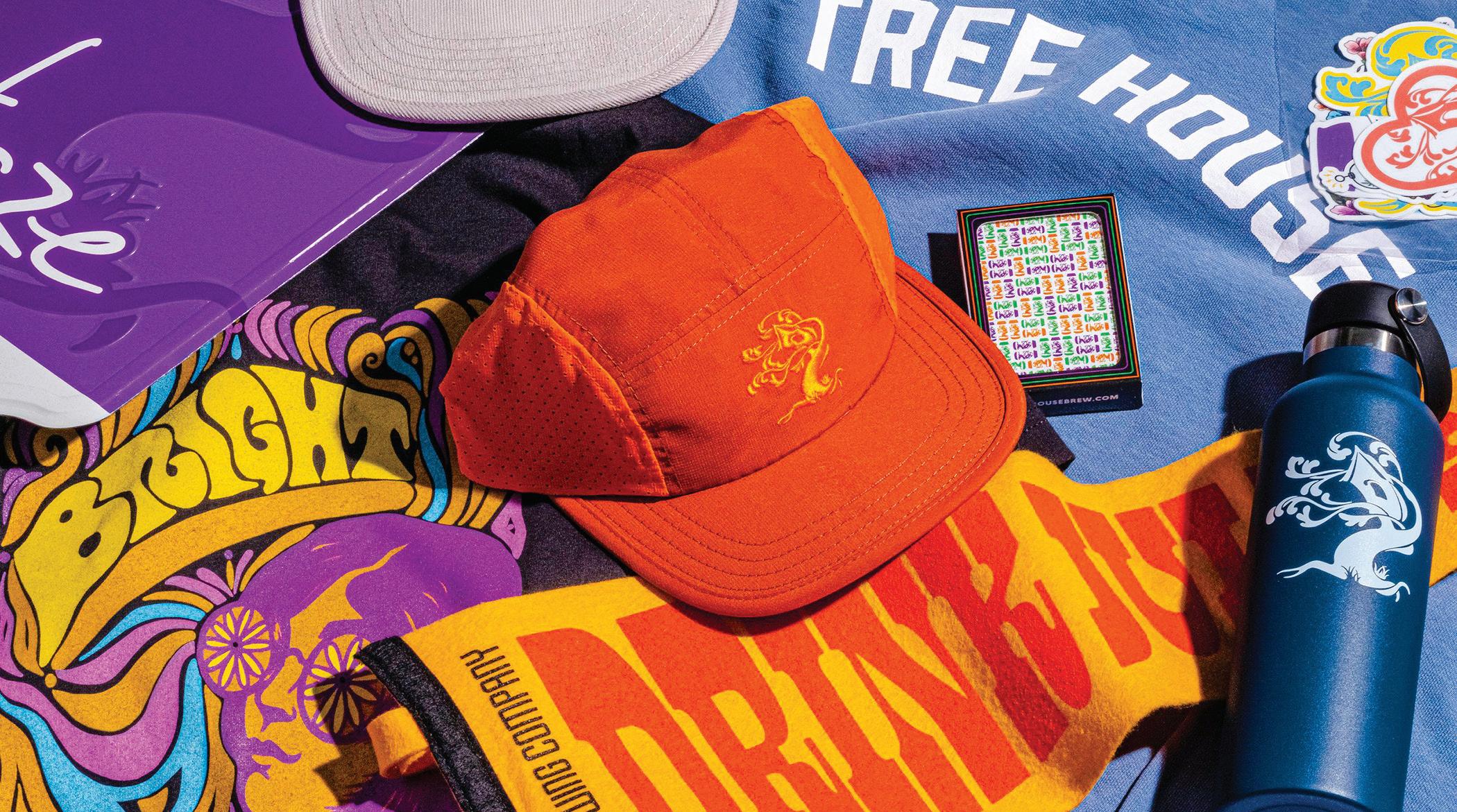
store to snag the latest collectible. Imagine a commemorative item designed specifically for your holiday stout or a cozy beanie featuring the artwork from your winter ale. Limited-edition items can be highly sought after by your fans.
Merchandise is an investment, but the return on that investment can be huge. By creating high-quality, creative items that resonate with your customers, you can turn your brewery into a brand they'll love to represent. Your merchandise will become a badge of honor, a way for customers to connect with your community and celebrate their love for your craft beers. Like all forms of marketing, the more focused you get on your mission and delivery, the better the results you can get. You have a real opportunity to strengthen your local community by making your location a desired destination that people want to proudly represent. At the end of the day, before spending money on merchandise, ask yourself if you’d use it or would want to carry it around? You can go beyond promotional and into fully custom merchandise that will stand out from the crowd and create truly unique items that repre-
sent and promote your company.
Greg Kerr is the Owner of Alchemy Merch, which creates custom merchandise for creatives and companies. Alchemy has made over 4 million custom products for artists, brands, and creatives in all fields. Greg guides artists and corporate clients through the process of creating quality custom merchandise that helps them achieve their goals of increased brand awareness, customer loyalty, and more. Alchemy eliminates the pain points of sourcing materials, production, quality control and design that most people encounter when making promotional products versus investing in custom merchandise. Prior to expanding his business and evolving it into Alchemy, Greg founded Pin Game Strong, making custom enamel pins for artists and corporate clients.
Art and creativity are in Greg’s blood. He is a musician and performs in a heavy hardcore band. He first started creating merchandise for brands while touring with his punk rock band in the early 2000s. The belt buckles he made for the band caught the attention of other musicians and soon turned into Greg’s first foray into custom merchandise.


By: Jake Ahles, Founder: Morel Creative
Ilove this product; others should too!” It's a tale I hear time and time again. The truth, however, is this: to attract customers and keep them coming back, you need more than a love for your product, even more-so than a great product. In reality, customers aren’t buying your product. They’re buying their perception of your product. So, you ask, how do we build the perception of your product in the customers’ minds so that it matches the way you see your beloved product? The answer is: your brand story.
A compelling brand story transforms your prod-
ucts from mere commodities into visceral experiences, establishing an emotional bond that keeps customers returning for more.
A brand story is more than a narrative. It's your brand's essence, encapsulated in a message that resonates with your target audience. It’s the who, what, and why behind your brewery or distillery. It's the emotional connections your brand forms in consumers' minds. It tells your customers how
your brand solves a pain point in their lives or helps them achieve a goal. A strong brand story is critical. It does more than tell people what you sell. It plants your brand in your customers' minds, shapes their perception and builds deep loyalty.
A great brand story can make your brewery or distillery a must-visit and it will set you apart from the competition.
Before you can craft a compelling brand story, you need to understand the core elements that make up your brand. Facts are important for your brand. Vitally so. But, are you sharing facts that will build lifelong customers or are they just interesting tidbits? Effective facts and features include:
1. History and Origins: Where did your brewery or distillery come from? What inspired its creation? An origin story builds authenticity and connects with your audience. It's a powerful tool.
2. Mission and Vision: What does your brand stand for? What future are you trying to create? A clear mission and vision guide your story. They ensure consistency in your messaging. This is where we can introduce emotional elements. We like to think we're logical but we often buy with our emotions and then we use logic to justify those feelings.
3. Core Values: What principles guide your operations? Your core values reflect your brand's character. They shape how people perceive your story.
Your USP is what sets you apart from competitors. It's not enough to simply list your products' features - you must explain why they matter. Why would the customer care?
Features: What is your product made of? Features are the tangible, factual components of your product. They are often straightforward and objective. They include the ingredients, the process, and the equipment used. These features are key to the
product. They may not be flashy, but they are critical to a customer's understanding of your product.
Advantages: Why is this feature good or desirable? Advantages are the reasons why these features are valuable. They are the unique characteristics or improvements that set your product apart from others on the market. The key here is to identify what makes these features desirable and how they enhance your product's appeal compared to your competitors.
Benefits: How does the advantage help your customer? Does it ease a pain point or help achieve a goal? This is where you connect the dots to the customer's experience. Benefits are the emotional and practical reasons to care about the features and advantages. They provide the context that explains why your product matters to the consumer.
Example: Let's take a feature of your whiskey: it's aged in oak barrels.
• Feature: The whiskey is aged in oak barrels.
• Advantage: This aging process imparts a unique flavor profile, including notes of vanilla, caramel, and spice, which are highly sought after by whiskey enthusiasts.
• Benefit: For the customer, this means a rich, smooth, and complex taste experience that stands out from other whiskeys. It offers a blissful moment of joy. Whether they savor it neat at the end of a long day or share a special bottle with friends. This sensory experience can make them feel sophisticated and connected to the craftsmanship behind the product.
Consider another example: You use a unique, proprietary fermentation method in your craft beer production.
• Feature: The brewery produces the beer using a proprietary fermentation method.
• Advantage: This method develops a wider range of flavors. It results in a beer with a unique taste, unlike any other on the market.
• Benefit: For the customer, this translates to a novel drinking experience—something new and exciting to explore. It caters to craft beer lov-

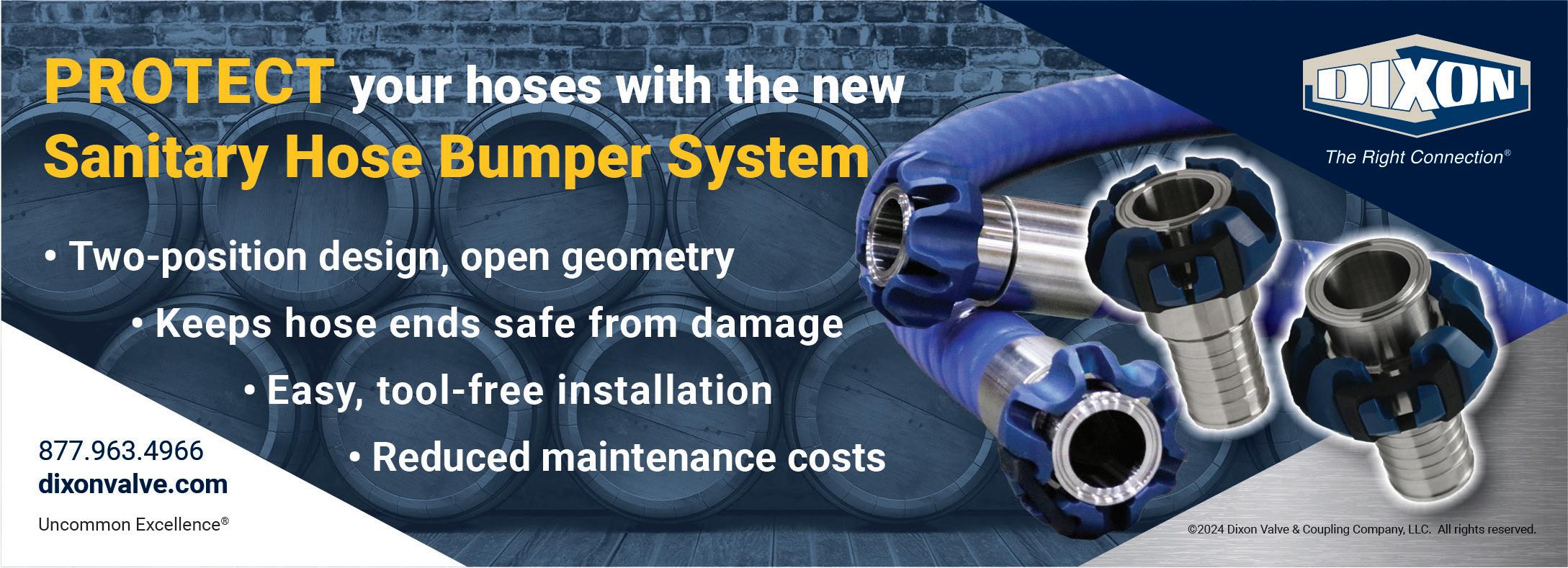
ers seeking unique flavors and new brews. By trying your beer, they feel part of an exclusive group that appreciates and recognizes the artistry and innovation in the brewing process.
Knowing your audience is key to crafting a story that resonates. Start by identifying your customer demographics—age, gender, location, and lifestyle. Then, dive deeper into understanding their preferences, needs, and pain points. What are they looking for in a beer or spirit? What are they looking for in a tasting visit? What experiences do they value? A brand story that addresses these aspects will be more relatable, memorable and impactful.
At Morel Creative, we use the F.E.E.E.D. Framework to help brands develop their unique story. This approach ensures that your brand story is not only compelling - incorporating features, advantages, and benefits - but does so in a consistent and cohesive manner that is aligned with your brand’s core values.
• Facts: Like the features we discussed, start with the key facts about your brand—your history, product features, and processes. But don’t stop there. Focus on the facts that matter to your audience. They should help solve a problem or fulfill a need: the advantages.
• Engage: Connect with your audience. Show how your brand relates to their lives. This could be through shared values, a common passion, or even a shared challenge.
• Educate: Inform your audience about what makes your products and/or process special. This could include your brewing process, unique ingredients, or innovative techniques.
• Emotion: Evoke feelings through your story. Emotions strongly influence decision-making. They can come from nostalgia for an old family recipe, the thrill of trying something new, or the comfort of a trusted brand.
• Differentiate: Combine the elements above to create a USP that stands out. Your differentiation should be clear and compelling, giving customers a reason to choose your brand over others. Plant your flag in the ground and claim your brands territory!
Once you have the key elements of your story, it’s time to weave them together into a compelling narrative. Here’s how:
• Storytelling Techniques: Use storytelling techniques to make your narrative engaging. This could include using a protagonist (your brand), a plot (your brand's journey), and conflict and resolution (challenges the brand has overcome).
• Consistency Across Platforms: Your brand story should be consistent across all platforms. This includes social media, your website, in-store experiences, and your packaging. Consistency builds trust and reinforces your brand’s identity.
• Incorporating Visuals and Media: Visual content is a powerful tool for storytelling. Use high-quality photos, videos, and graphics to showcase your narrative. A well-crafted brand video or a series of compelling images can say more than words alone.
By crafting a cohesive brand story that is consistent across all customer touch points, you’ll set your brewery or distillery up for unparalleled success.
How do you know if your brand story is effective? Here are a few ways to measure success:
• Key Performance Indicators (KPIs): Track metrics such as brand awareness, customer engagement, and sales to see if your story is having the desired impact.
• Customer Feedback and Reviews: Listen to what your customers are saying. Positive feedback and reviews can be a sign that your story is resonating, while negative feedback can provide insights into areas for improvement.
• Continuous Improvement: Your brand story should evolve as your brand and the market change. Regularly review and refine your narrative to ensure it stays relevant and compelling.
Your brand story is a powerful tool that can set your brewery or distillery apart in a crowded market. By deeply understanding your brand’s point of view, identifying your USP, and using the F.E.E.E.D. Framework, you can craft a narrative that resonates with your audience and builds lasting connections. Start today and watch as your brand’s unique story attracts customers and fosters lasting loyalty along the way.
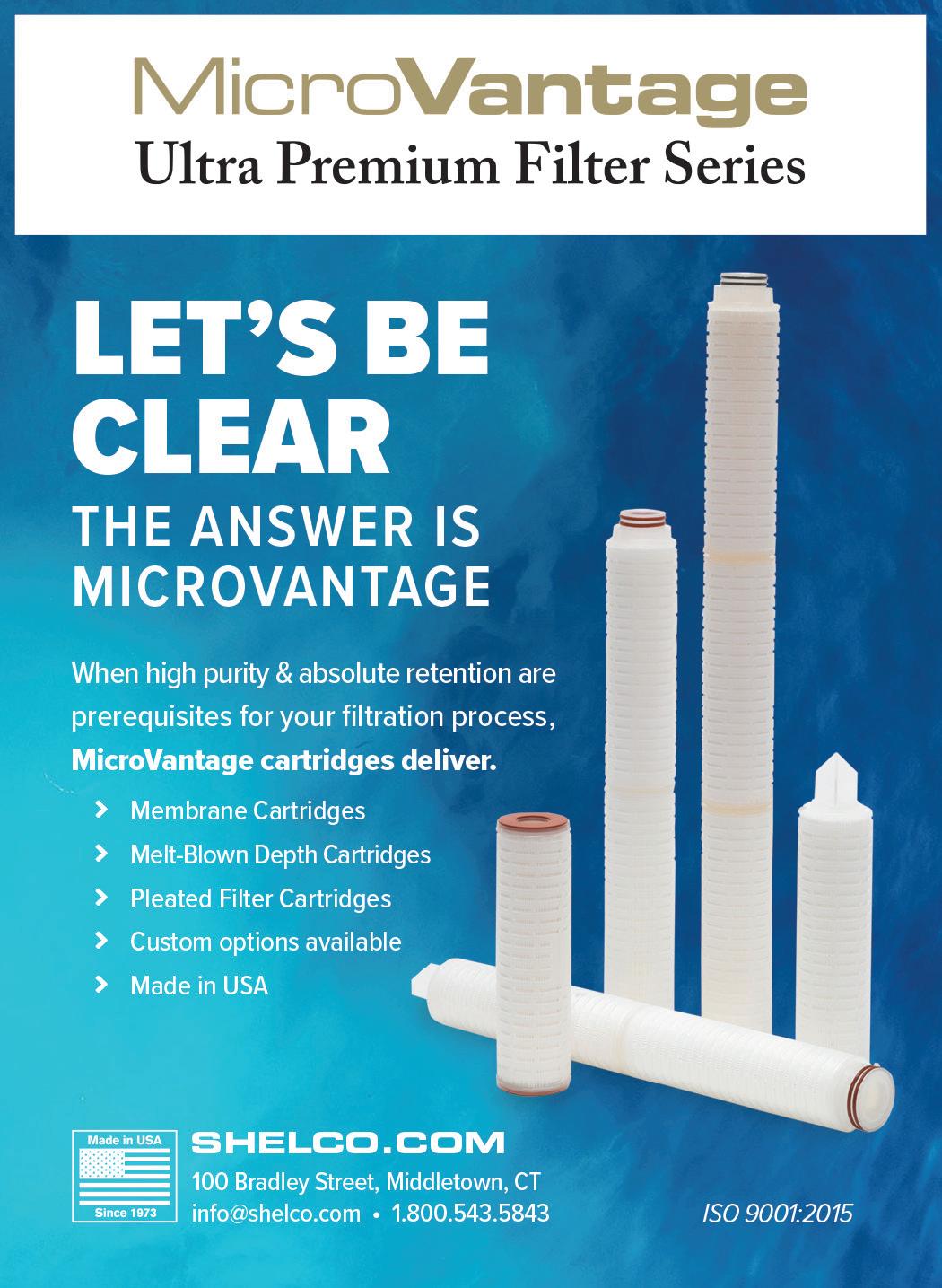

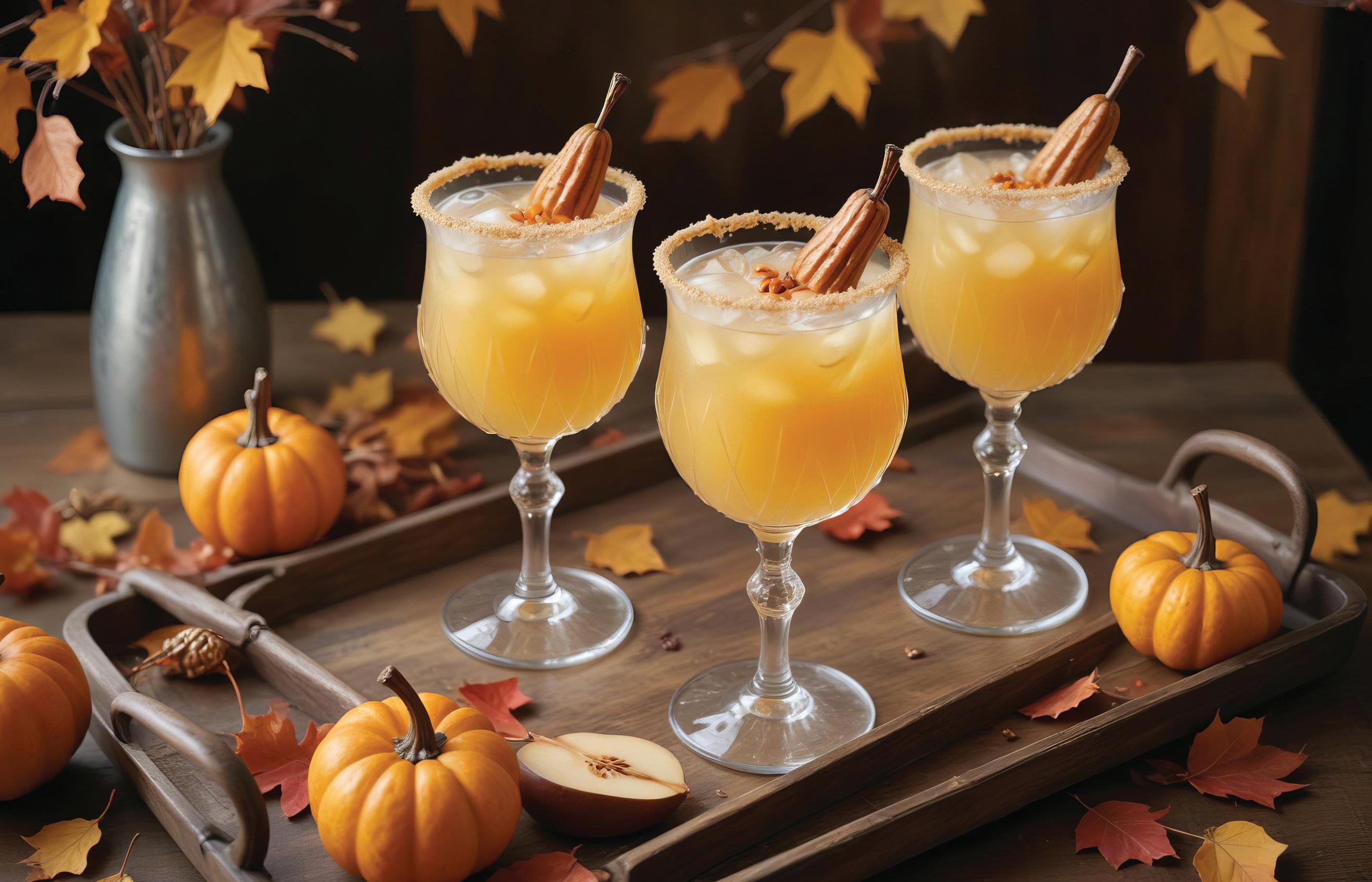
By: Hanifa Sekandi
It is pumpkin-spiced latte season. It is the time of year when fall revelers look for beverages that pay tribute to the season, where amber and orange-colored leaves adorn the trees and paint the sidewalks. During this season, beverage choices are intentionally shifting. Consumers who like beverages that signify a season, particularly fall, shop purposefully. They know what they are looking for and look for beverage brands that will meet their desire. This desire is not limited to flavor. It also includes brand aesthetics. The magnitude of these seasons is noticeable among brands when you enter grocery stores
toward the end of August and see pumpkin-printed chocolate bars and candy.
The summer is quite anti-climactic when it comes to in-store branding. Of course, there are many great beverage brands with colorful summer labels and summer flavors. But generally speaking, retail stores do not get into seasonal festivities until the fall and winter. Summer is a great time to build brand awareness and experiment since most consumers are open to trying new beverages during the summer. Whether it is a party, fun, sun or backyard BBQ, consumers take more liberties with
their beverage experimentation. New innovative flavors with fresh fruit or premium cocktail blends are quite appealing.
As the summer draws to a close, the desire for comfort grows. People love familiarity, but more importantly, they hold on to nostalgia. A beer they remember their father drinking on a cool fall night where you can smell campfire in the air while he and his friends tune in to watch football is often a favorite choice. Not only does it draw upon a significant memory, but it is also anchored to a specific time of the year. For some reason, everyone in the room watching the game who brought their beverage to imbibe sticks to what they came with. It is their beverage of choice while they watch the game and enjoy wings. While some prefer a deep, rich ale, others prefer to sip on a robust, smooth whiskey served neat.
So the question is, why is fall and winter marketing essential? It helps you reestablish your consumer base. Further, it allows you to return to your roots. What makes your beverage unique? It also allows brands to celebrate their consumer and show their appreciation.
Now is not the time to hibernate. Understandably, the summer is exhausting. It is the Olympics of beverage marketing. A lot of marketing departments breathe a sigh of relief when this season is over. Summer marketing requires brands to pivot quickly with a multi-tiered strategy. While you develop new labels and flavors to compliment the warmer months, marketing strategies must be carried out thoughtfully. The goal is to appeal to old consumers and new consumers. If effective, new consumers can be easily enticed to try signature beverages from your product line that perform well in the fall and winter but also long-term.
Beverage brands do not have to look far to see the benefits of fall and winter marketing strategies. Whether it is your local coffee shop or a major brand. Every brand aligns with these two pivotal branding times of the year. Why? These seasons have so many occasions that offer opportunities to consumers actively looking for seasonal items to celebrate and pay tribute to holidays occurring
during this time. When coffee shops begin to promote pumpkin-spiced beverages this spurs the desire to get in the seasonal mood. Social media posts about fall attire, comfort foods and beverages have become the norm.
If your marketing strategies were lukewarm during the summer, heating them up during these months is limitless. A consumer profile is already laid out. Both small and major brands provide it. If your brand has been operating for a few years, you should already have a consumer profile that you can analyze. What were your shortcomings in previous years? What were your beverage wins? What beverages from your product line sell well during this time? How do you remind your consumer that you are their go-to beverage when they think of Thanksgiving or the holidays?
● There is a demand for fall and winter merchandise.
● Other brands are in the seasonal spirit.
● It’s easy to meet predictable consumer expectations.
● There are multiple opportunities to showcase your beverage with seasonal and holiday branding.
In the summer, there is a fast marketing approach. It is like throwing darts at a board and hoping one will stick. In the fall and winter, your goal is to last all season. Summer trends fade quickly, but fall and winter staples never lose their touch. Cinnamon spice, chestnuts roasting on an open fire, mistletoe and warm apple cider are timeless staples.
So, how can you ensure that your brand does not miss an opportunity for further brand building and amplification during this time?
Create a timeless seasonal campaign that draws on nostalgia. If you already have a campaign that has performed well during this time of year, make it your seasonal campaign or your pumpkin-spiced
latte. Get your consumer excited to purchase this beloved limited edition. What aspects of this campaign performed well? Draw upon these elements and add a few extra details to this year's campaign.
For example, football season or occasions like Halloween allow for creative brand exploration. Bacardi did a great job at tapping into the nostalgia of the season by paying tribute to classic horror films with signature cocktails that they showed their audience how to make. Another extra touch was a seasonal label change on their bottle, which featured white bats on the signature Bacardi bottle.
It is important to not just consider the season but to map out every holiday that will occur from the fall until the spring. From Halloween to Valentine's Day, there is a lot of marketing mileage to cover.
Create a marketing roadmap that will detail what you will do each month and each season that falls within that month. Then, curate a list of activities that occur during the seasons and are associated with a holiday or occasion. Football Sunday, what does this mean to your audience? How is your beverage best enjoyed while watching a game?
Leaning toward deeper and richer tones for labeling should also be considered.
Just like Bed, Bath and Beyond, you should aim to become a household fixture synonymous with fall. All merchandise should support consumer buying choices at this time. Perhaps a candle inspired by the ingredients in your beverage or dish towels with fall colors. Anything and everything that falls within this category.
When creating social media content strategies, create a picture in the buyer's mind that your beverage fits their lifestyle ideals this season. Images of people sitting by a campfire outside or perhaps playing card games indoors. Here is an opportunity to place your product in familiar settings along with familiar activities. The fall and winter are about being home. To become a go-to brand, you need to be perceived this way. For example, most summer-marketed beverages experience a dip in sales in regions that experience colder seasons. This is why it is good to shift the marketing focus for a summer beverage to regions that remain warm all year. This sentiment should be carried over to fall and winter marketing strategies where the bever-

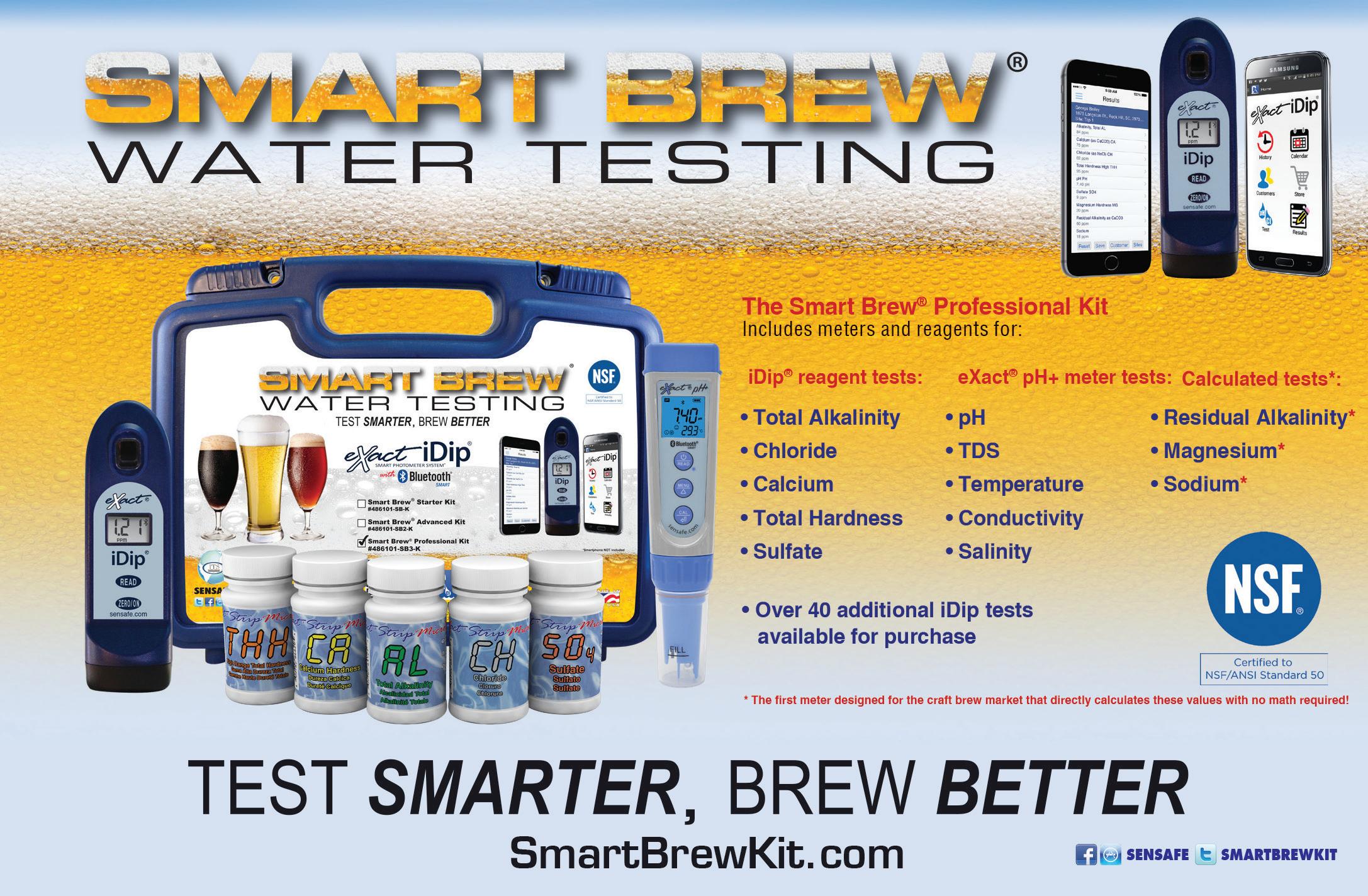
age experience is not fast and fun but more so slow and steady.
Some beverage brands understand that their resources are best spent during the fall and winter. Understandably, you cannot be all things for everyone. Also, some brands are happy with their signature product. It performs well, and its consumers like it. In this case, the goal is to increase their consumer outreach while keeping their existing consumer base happy. Since beverage sales have peaks and valleys, capitalizing off of peak seasons will help to mitigate the dip in sales during low seasons such as dry January or the summer if your beverage is not a go-to choice.
The main component to remember when building a fall or winter marketing strategy is that your consumer desires familiarity and predictability with simple yet effective surprises. Showcase how your brand fits perfectly into these slower times, where quality connections and interactions are of higher value, where beverage choices are more of an added fixture complimenting a friendly gathering and not the star of the party.


By: David DeLorenzo
Beer and spirit development is something of an art. The masterminds behind these crafts must have keen awareness and attention to detail to ensure the best result, from flavor to body.
However, if they own and operate the establishments that serve their specialty sips, they must also be masters of entrepreneurship. This often includes leading and managing staff, handling payroll and ensuring the company’s insurance properly protects the business, its staff and patrons.
As beer and spirit producers are experts in their craft, I am an expert in hospitality insurance, specif-
ically for bars, restaurants, tasting rooms, brewpubs and other establishments that serve food and alcohol. This niche market has unique, intricate circumstances, so business owners need to understand the ins and outs of insurance.
Craft beer and spirit producers don’t have to get an entire education on the topic, but being informed enough to find the right broker to guide them will make a difference. From the perspective of a 20-plus-year veteran insurance broker who carved out a niche just for this set of businesses, here are some tips and best practices to succeed in this market.
In many cases, a business starts with one inkling of a dream. Soon after, a lease will likely be required to make this dream a reality. The importance of the establishment’s location cannot be understated when transforming the mirage into a tangible reality. Second to the foundation of the dream is the lease that will define the leasee’s responsibilities and entitlements. Insurance on the lease is pivotal in that it can serve to safeguard the investment of your dream.
Most leases have their own set of insurance requirements that can help set the stage for the success of a business. Paying close attention to the foundational aspects of the lease, as detailed next, can help ensure best practices and a solid foundation for the future of the business.
Having been in the hospitality industry for well over 20 years now as both a restaurant owner and an insurance broker, I have seen and experienced a lot of unique situations from different perspectives. So, when I say that understanding risks and exposures is a crucial factor of success, it’s coming from a place of lessons learned and knowledge gained. With that, here are some of the most beneficial ways to assess, address and avoid risks as a business owner in the hospitality industry.
Serving liquor can bring joy and perils to a business owner who makes and serves wine, beer or spirits. While a clever cocktail menu enhances many establishments’ vibrant energy, every pour possesses potential risk, as overconsumption of alcohol often brings the consequences of poor decisions from fights to driving under the influence. Having insurance for liquor liability is a non-negotiable in protecting your establishment from lawsuits with allegations of negligence or overserving. Know the laws in your state and ensure your business is appropriately protected.
Also vital to an establishment selling craft beer or spirits is proper assault and battery coverage. Similar to liquor liabilities, assault and battery instances are often a result of overconsumption. To this end, you must be careful when safeguarding your establishment.

Consider General Liability the frontline of defense for your business. It will protect you when accidents happen on your property. This coverage could prevent a patron tripping over a loose tile at your establishment from becoming a lawsuit. While the occurrence and aggregate limits of insurance companies can seem overwhelming, understanding them is vital as they are the backbone of your safety net.
Your establishment’s success largely depends on your staff, from the kitchen team to the faces that are seating and serving your guests. A solid employee base is essential; protecting those employees is even more important. Owners also need to protect their establishment from claims arising from hiring disputes to allegations of discrimination. This is why Employment Practices Liability Insurance (EPLI) is key. Hired and Non-Owned Auto is another important level of coverage for anything from sending an employee on an errand to making deliveries.
Cyber Insurance is paramount for protecting a wine bar or taproom and its customer data in today’s digital world. Umbrella Insurance can be likened to the roof over your establishment. This coverage extends beyond the existing policy limits and offers additional protection. Not all umbrella policies are the same, so it’s essential to understand the terms, coverage, and exclusions.
Ultimately, when it comes to coverage, it’s not just about more; it’s about the right coverage for your specific establishment. This is especially true in the case of a bar or restaurant that is serving wine, beer and spirits.
Just as coverage is not created equal, not all help is the same. Business owners must know who to turn to and when. Quite simply, a broker is more than just a middleman. A broker will advocate for your business and help guide you through the complex world of insurance. A good broker will understand your needs and help you find the right fit for your establishment. Insurance companies are the policy creators and the ones who bear the risk.
I cannot overstate the importance of working with a specialized broker who knows the intricate ins and outs of the craft wine, beer and spirits indus-
try. They can become your partner in finding the best insurance for your business and throughout your journey as a business owner.
Documentation and certification are paramount. You need coverage, yes. But more importantly, you must be able to prove you have it when the time comes. While paperwork may seem daunting, it’s yet another line of defense in the protection of your business.
Whether you dream of opening a wine bar or are already immersed in the hustle and bustle of a thriving taproom, there’s never a wrong time to ensure your insurance and policies are airtight. With these tips and best practices, you can rest easy that your business is protected so you can focus on your craft.
Finding the right partners to help take your dream to the next level or to help you continue to thrive is at the forefront of your success. Through trust, communication and camaraderie, a long-term partnership with your specialized broker can serve as an important relationship to propel your business.
Out of his passion for serving the restaurant and hospitality industry, David DeLorenzo created the Bar and Restaurant Insurance niche division of his father’s company, The Ambassador Group, which he purchased in 2009. For more than 20 years, he has been dedicated to helping protect and connect the hospitality industry in Arizona.
For more information visit... www.barandrestaurantinsurance.com

By: Alyssa L. Ochs
Efficiently managing wastewater helps breweries and distilleries reduce operational costs and promote environmental sustainability. The management process may involve reducing water usage by fixing leaks, using high-efficiency equipment and optimizing cleaning processes. It may also involve monitoring the quality of wastewater to identify issues early on and understanding what's in the wastewater to adjust treatment methods accordingly.
Breweries and distilleries can handle wastewater using various treatment options. To get a better sense of the options available, we connected with companies working in this industry and producers who have found wastewater treatment systems that work well for them.
Craft beverage producers use a lot of water in their processes, and much of that water becomes wastewater. Wastewater production comes from various cleaning tasks, including washing bottles, kegs, utensils and building surfaces. Wastewater comes from wort production because making wort requires water as an ingredient to standardize the alcohol content. Washing and sterilizing vessels, refrigeration and container applications also produce wastewater in a beverage production facility.
One treatment option for wastewater is ultrafiltra-
tion, which uses a membrane filtration process to remove microorganisms and particles from water. Some facilities use filtration to pretreat water before reverse osmosis.
Reverse osmosis is a purification process that removes tiny molecules in water and is typically more effective than other methods. However, it can potentially cause bacteria contamination, and the production rate can be slow.
Ultrafiltration is a treatment option to remove bacteria, viruses and other microorganisms from water. However, it is not powerful enough to remove dissolved solids, metals or chemicals.
It is also possible to use a bioreactor in the wastewater treatment process that supports a biologically active environment where bacteria and protozoa can grow. This type of chamber can be aerobic to remove organic matter and oxidize ammonia to nitrate or anaerobic, which just removes organic matter. An anoxic bioreactor removes nitrogen from nitrates to nitrogen gas.
Tyler Glaze is the COO of Shorts Brewing in Elk Rapids, Michigan and told Beverage Master Magazine that his brewery uses an aerobic membrane bioreactor (MBR) to treat wastewater. Shorts Brewing is a mom-and-pop operation, yet one of the largest craft breweries in the state. It prioritizes natural resource protection, outdoor recreation, equity and other community development initiatives.
Glaze said that his brewery does not use wastewater in the brewing process because there isn’t a cost-benefit to doing so at the moment. Yet he said that historically, Shorts' most significant wastewater challenge was the volume of biochemical oxygen demand (BOD), phosphorus and total suspended solids (TSS). This is because Shorts’ aerobic MBR system and side-streaming efforts in the brewhouse and the cellar control BOD, phosphorous and TSS exceptionally well.
“Our BOD to drain is reduced from around 700 to 1,000 pounds of BOD per day to less than one pound of BOD per day to the municipality,” he said. “We have similar reductions in the volume of TSS and phosphorous as well.”
However, he said the brewery’s biggest challenge currently is the volume of solids separated from the wastewater treatment plant. “Our aerobic treatment system creates solids as a byproduct of treatment,” Glaze said. “Reducing the volume of the solids through separation and drying would be our next step to reduce the costs of hauling the solids.” We also connected with Copper Bottom Craft Distillery in Holly Hill, Florida, to discuss wastewater. Copper Bottom is a small-batch distillery that produces handcrafted, award-winning spirits from raw sugar cane without artificial colors, flavors or sugars added. It offers tours, a tasting room and a membership-based Rum Club.
Jenni Craig, Copper Bottom's CMO, told Beverage Master, “We don’t use anything to treat wastewater. We treat our product and production water through a reverse osmosis unit. We use this RO water to proof our spirits.” Craig also shared, “We use 25 percent of our stillage from the previous run into the next cook.” To date, Copper Bottom has not encountered any significant challenges with its wastewater.
One company working in this space is Cambrian Innovation, based in Watertown, Massachusetts. Cambrian’s mission is to make distributed water reuse simple, sustainable and cost-effective. It helps businesses across various sectors (including beer, spirits and wine) transform their wastewater into a valuable resource while generating clean energy and clean water with industry-leading solutions. This leader in sustainable resource management specializes in transforming environmental liabilities into assets while helping businesses save money through efficient processes and environmentally responsible practices.
Matt Silver, CEO of Cambrian, told Beverage Master that his very first customers were in the craft beer industry. He is currently working on projects with numerous craft beverage customers today. Cambrian's Water-Energy Purchase Agreement (WEPA) allows beverage manufacturers to recycle high-strength wastewater as a service. “Cambrian’s core focus is helping customers recover clean water, clean energy and even carbon dioxide from their waste streams,” Silver said. “Our goal is to eliminate the challenge of managing these waste streams and the cost associated with that, as well as the cost of using those commodities and utilities. It’s really a win-win.”
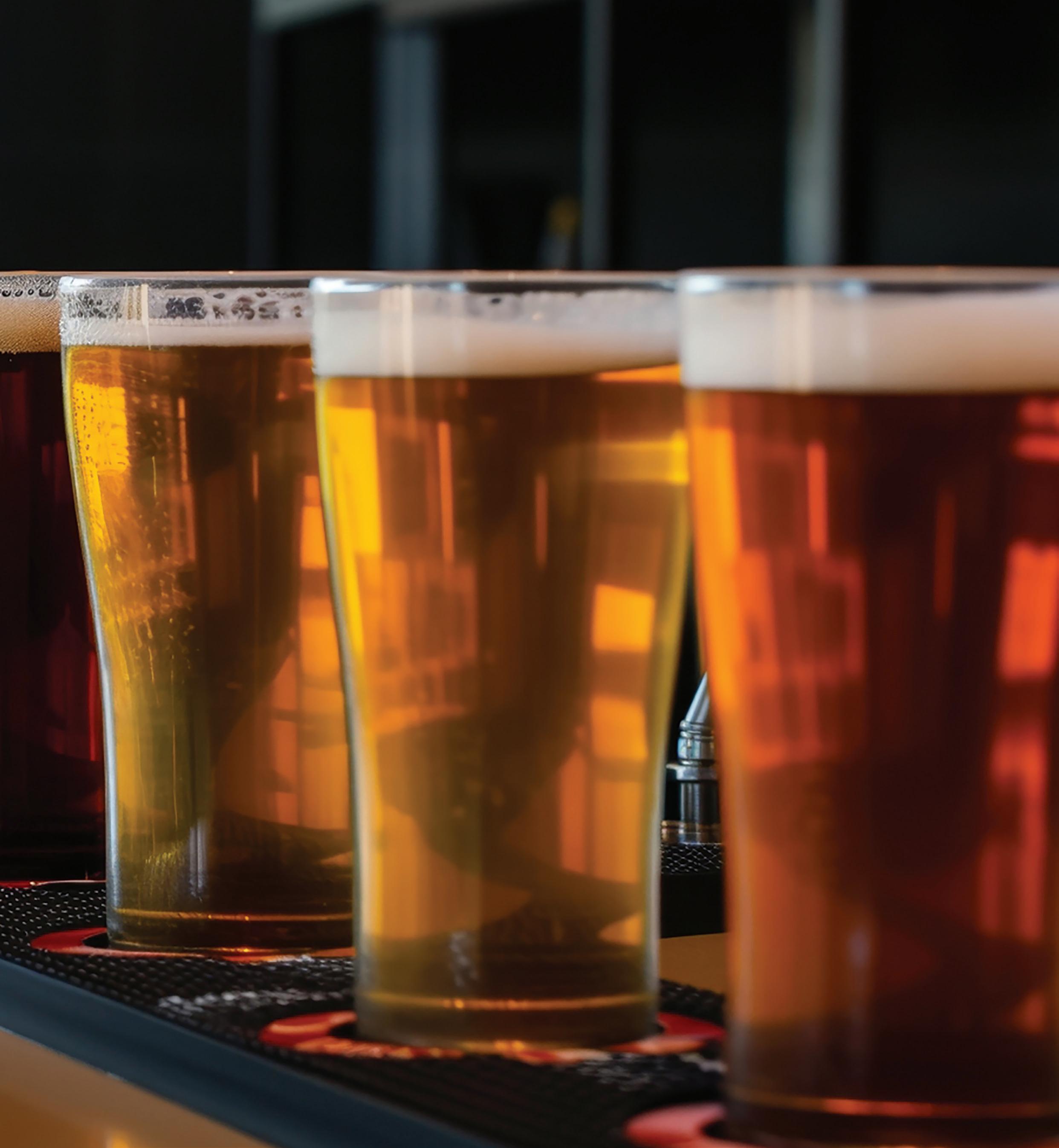

Silver explained, "We have a range of proprietary technologies and solutions that we install onsite that take polluted water and generate drinking-quality water and biogas that can be used for heat and electricity. What that does is cut the customers' waste generation, reduces their carbon footprint and decreases their overall water use." Silver said craft beverage producers interested in improving their wastewater management should reach out to Cambrian to have a phone conversation or visit their website. From that point, Cambrian will ask for details about the customer's facility, evaluate the opportunity, provide an estimate and present a term sheet to sign before developing a final design. Cambrian's services are best geared toward medium- to large-size breweries that produce more than 30,000 barrels per year. Another company you should familiarize yourself with when you're developing a wastewater solution is American Hose & Supply. This company is a leading hydraulic and industrial hose supplier that ships to all U.S. states and internationally.
Based in Tulsa, Oklahoma, American Hose & Supply serves many different industries, including breweries. Its product line includes various sizes and types of hydraulic hoses and rugged hoses for industrial applications. It can custom-build hoses at any length for your needs and according to your desired pressure rating and end-fitting specifications. You can also contact American Hose & Supply for pressure washers, gauges, tubing, valves, clamps, barbs, fittings and couplers to handle wastewater.
Silver from Cambrian Innovation emphasized the need for beverage makers to continuously consider their wastewater management goals throughout the process of researching options.
“Are they looking for compliance, or are they looking to reduce the volume of water they use?” Silver asked. “That will dictate the quality of the water they need. Also, think about whether they want to own and operate their own system or pay for performance on a per-gallon basis while they focus on their business.”
Glaze from Shorts Brewing urges craft beverage producers to remember that you cannot control what you don't measure. If you don't work hard to get an accurate understanding of your waste
stream, you won't be able to design an appropriate system to handle it. He recommends doing your research or hiring a team to help you determine the best approach to handling your waste stream. “There is no one-size-fits-all solution to brewery waste management because every municipality has different constraints,” Glaze said. “You might be surprised what you are able to send to a municipal waste system and what you are not.”
He also explained that there is a quick and easy way to determine if your local municipal wastewater treatment system is functioning well or needs improvement.
“Typically, if a system is working well, you won't ever hear from your wastewater treatment facility, especially as you are starting up a brewery,” Glaze said. “If the municipal wastewater treatment system isn't able to effectively handle waste, they will start surveying industrial users like breweries and food producers.”
He recommends using the EPA’s Water Pollutant Loading Tool to locate your local system and look up the detailed facility report for that local treatment system.
“If you notice a trend that shows they are seeing increased loading or violations in the quarters where you are producing the most beer, then you should definitely start the process of planning improvements to your waste stream,” said Glaze. “It's best to be proactive and avoid this approach, but most people won't act until they are required to. Use this information to explain to stakeholders at your business that the issue might require more urgency.”
Finally, Glaze advises producers to work with their municipalities to develop solutions. “The people who work at the waste plants are incredibly knowledgeable and typically have experience with all kinds of different wastewater systems,” said Glaze. “They have big brains and most of the time would love to chat about their job with you over a beer. You can learn a ton from them, and they can help guide you toward solutions to reduce the most impactful constituents in your waste stream.”

By: Rene Lacad, Founder & Marketing Director – Lacadverstiment
Launching a new beverage brand is thrilling, but it can also feel like diving into deep, uncharted waters. With so many established competitors, getting your brand noticed takes more than just a great product. You need to get creative, connect with your audience, and craft a message that stands out. Whether you're offering a new line of craft beer with distinct flavors, a wine brand with a unique sustainability factor, or a new twist on an age-old spirit, how you market your beverage will ultimately determine its success.
But where do you even start? The key is developing a thoughtful marketing strategy that doesn't just focus on traditional methods. From nailing down your brand’s identity and story to connecting with influencers who share your vision, there are
plenty of ways to make a splash.
Before your beverage hits the shelves or online store, it’s essential to establish a solid brand identity. This isn’t just about a catchy name or a cool logo — your brand identity is the foundation that influences how people perceive your product.
Think about what makes your beverage unique. Is it the use of locally sourced ingredients? The story behind its creation? Or maybe it’s the lifestyle it represents, such as health-conscious living or an eco-friendly ethos. Whatever sets your beverage apart should be reflected in every aspect of your
branding, from the packaging design to the tone of your social media posts.
Storytelling is the secret sauce that makes your brand memorable. Today’s consumers crave authenticity and connection, and a well-crafted story can do just that. Instead of simply focusing on the features of your beverage, tell the story of its journey. Why did you create this brand? What inspired you? What challenges did you overcome to bring this product to life? Sharing these details adds depth to your brand and helps potential customers feel like they’re part of your journey.
For example, if your beverage is a refreshing sparkling cider made with natural extracts, your brand story could focus on the purity of the ingredients and your commitment to sustainability. If your drink is a bold new bourbon blend, the story may revolve around sourcing barrels from small producers to better support local communities and businesses. The key is to create a narrative that resonates with your target audience and showcases your values.
Consistency is crucial when it comes to storytell-
ing. Your brand’s message should remain uniform across all platforms, including on social media, your website, or in-store displays. This consistency builds trust and recognition, making it easier for customers to connect with your brand on a deeper level. Ultimately, your brand’s story will help turn casual buyers into loyal fans, so make it compelling, authentic, and uniquely yours.
In today’s marketing landscape, influencers are like the modern-day version of word-of-mouth advertising. Collaborating with the right influencers amplifies your brand’s visibility while leveraging their credibility and trust. These influencers have built loyal followings by being authentic, relatable, and engaging, making them the perfect partners to introduce your new beverage brand to an eager audience.
The key to successful influencer collaboration is selecting the right individuals who align with your brand's ethos. This isn’t just about choosing the influencer with the largest following — it’s about finding someone whose personal brand and values
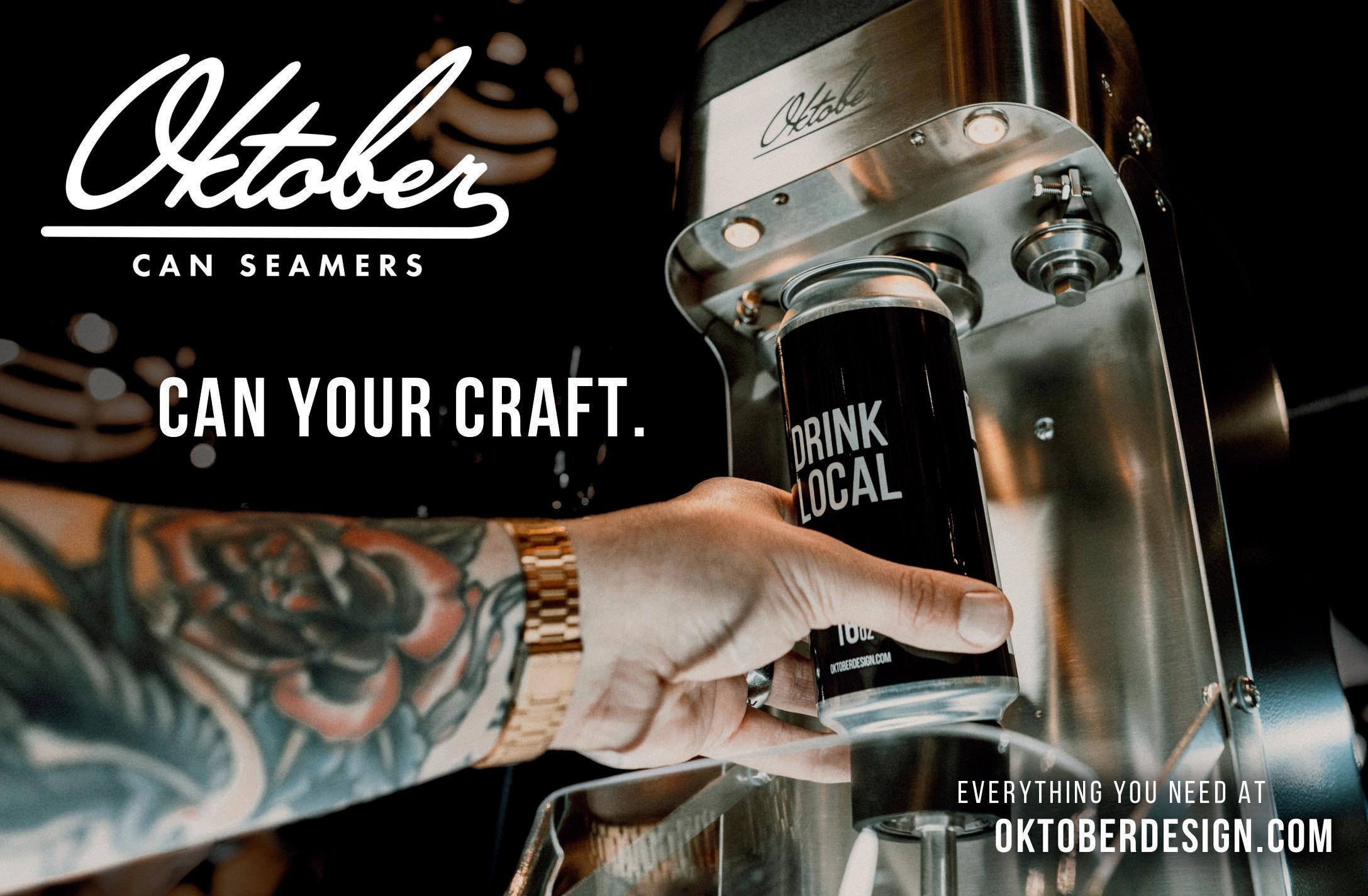
match your product. For example, if your beverage is organic wine, look for beverage influencers who also dabble in the health and wellness space. If you’re launching a high-energy kombucha, fitness influencers whose content primarily focuses on performance enhancement and physical training would be the ideal partners.
Once you’ve identified the right influencers, work with them to create content that feels natural and authentic. This could be anything from Instagram Stories showing the influencer enjoying your drink post-workout to a YouTube video where they share how your beverage fits into their daily routine. Whatever you choose, it’s essential that the content feels genuine and not overly promotional. The more authentic the partnership feels, the more likely their followers will trust and engage with your brand.
Beyond just boosting brand awareness, influencers help build trust because their followers see them as reliable sources of recommendations. Similarly, when an influencer promotes your product, it lends an air of credibility that traditional advertising can’t replicate. This trust factor can be a game-changer, especially for a new brand trying to carve out space in a crowded market.
Measuring the effectiveness of these collaborations is also key. Track engagement, brand mentions, and sales increases during influencer campaigns to ensure they hit their intended mark. In the end, partnering with influencers allows your beverage brand to tap into new audiences and build strong, credible connections with potential customers, all while creating buzz around your product.
When it comes to marketing a new beverage, one of the most effective strategies is simple: let your product do the talking. Offering product samples and hosting events is a surefire way to put your beverage directly into the hands of potential customers, allowing them to experience it firsthand. There’s something undeniably powerful about tasting a drink that advertising alone can’t convey. For a beverage brand, sampling can make all the difference in sparking excitement and creating loyal fans.
Product sampling works because it removes the
risk for the consumer. People are more likely to try something new when there’s no upfront cost involved. Whether you’re at a local farmers’ market, a community event, or even a pop-up inside a grocery store, sampling your product allows consumers to engage with your brand in a direct, meaningful way. You can also partner with local businesses, gyms, breweries, or cafés to offer samples to their customers, which widens your exposure and aligns your brand with trusted, established names in your community.
In addition to sampling, hosting and participating in events is another powerful way to build buzz around your beverage. From sponsoring a local sports event to hosting your own launch party, events create an environment where people can connect with your brand beyond the product itself. It’s not just about the drink — it’s about the experience. Create memorable moments that tie your beverage to a sense of fun, community, and lifestyle.
For instance, if your sparkling alcoholic seltzer brand focuses on healthy, active living, you could sponsor a 5K run or a yoga event, offering your product as the refreshing drink at the finish line. If your beverage has a more social appeal, such as a cocktail mixer, consider hosting a tasting event at a trendy venue where guests can mingle and enjoy your drinks in a lively atmosphere.
Ultimately, product sampling and events allow consumers to build a personal connection with your beverage. They’re no longer just hearing about your brand but experiencing it firsthand. This sensory engagement helps your beverage stand out, creates memorable interactions, and makes consumers more likely to reach for your product the next time they go shopping.
In today's digital age, building a strong community around your beverage brand is just as important as the product itself. Engaging with your audience consistently and authentically helps foster brand loyalty and create a sense of belonging that keeps customers coming back. It’s about more than just selling a drink — it’s about creating a movement that people want to be a part of.

To start, consistent engagement on social media is a must. Platforms like Instagram, Facebook, and TikTok allow you to interact directly with your audience to build personal and genuine relationships with them. Whether it’s responding to comments, reposting user-generated content, or sharing behind-the-scenes glimpses of your brand, showing that there’s an actual human behind the account helps create a connection with your followers.
Another great way to engage your audience is through storytelling campaigns and contests. Run creative campaigns that encourage your followers to share their own stories or experiences with your beverage. For example, you could host a contest asking customers to post photos or videos of themselves enjoying your beverage in unique or fun ways, offering prizes for the most creative entries. This increases engagement and creates organic word-of-mouth buzz as your customers become your brand ambassadors.
Collaborating with media outlets and bloggers is another effective way to expand your reach. Whether through press releases, interviews, or features, getting coverage in industry-specific publications or lifestyle blogs can help you tap into new audiences and further establish your brand's credibility.
At the end of the day, building a community means creating a brand experience that feels inclusive and welcoming. The more people feel connected to your story, values, and product, the more likely they will support your beverage and spread the word.
Marketing isn’t a set-it-and-forget-it game, especially in the fast-paced world of beverage brands. Once you’ve launched your campaigns, it’s crucial to regularly measure their success and adjust your strategies accordingly. Tracking performance helps you understand what’s working, what isn’t, and where there are opportunities for improvement.
Start by using tools like Google Analytics, social media insights, and sales data to monitor your progress. Pay attention to key metrics like engagement rates, website traffic, and conversion rates. Are people clicking on your ads? Is your social media engagement growing? Are sales increasing
in the regions or demographics you’ve targeted? These data points provide valuable insights into how effectively your marketing efforts are connecting with consumers.
Once you have the data, be prepared to adapt. If a particular influencer partnership didn’t generate the expected results, consider why and adjust your approach for future collaborations. If your online store’s traffic is high but sales are lagging, it might be time to refine your website’s user experience or adjust your pricing. Successful marketing requires flexibility, and staying responsive to the data ensures your brand remains relevant and competitive in a crowded market.

Rene Lacad is a 28-yearold entrepreneur, speaker, and content creator who has been featured on Forbes, Entrepreneur, and MSN. He got his start in business when he founded an eight-figure marketing and creative agency that specializes in branding and paid media. His lifestyle content caught traction online where he was able to amass over 1 million followers and 500,000,000 views across his social media platforms. Since then, he's been able to build other successful ventures like his software company SMMDealFinder, his supplement company Unlimitter, and his education company which helps aspiring entrepreneurs learn more about digital marketing and advertising.


By: Kris Bohm: Owner of Distillery Now Consulting LLC.
If you have a drink of bourbon from a well known whiskey brand, chances are that whiskey was distilled on a continuous column still. When it comes to making whiskey and selecting the equipment for distilling it is wise to look to industry leaders and their choices can help guide your decisions. Distilleries that are selling millions of cases of bourbon and rye whiskey annually in countries all around the globe use continuous distillation equipment to make their whiskey and that type of still might be the best choice for you.
Most of the established distilleries in the southern United States made the decision decades or in some cases centuries ago to distill their whiskey on stills that are very different from the pot stills. While distillation of whiskey has its history firmly rooted in small batch distillation pot stills, the modern production of bourbon is a very different business from where it began centuries ago. The vast majority of whiskies you will find behind your local bar today were all distilled on continuous column
stills. Whether it is bourbon, rye whiskey, Canadian or Irish whiskies there is a good chance that most of the bottles you’ll find were all made on a continuous column still. Together let’s explore a bit of history, operational theory and the economics of continuous stills. My goal with this article is to help you more carefully consider if a continuous column still is the right choice to make your whiskey.
The science of distillation is an ancient technology, with history pointing to the discovery of distilling occurring sometime in the first century AD. As knowledge of distillation and technology improved there are records of spirits being distilled for beverage in the 12th century by Latins. Up until the 1800s all distilling was done in batches on what was a known as simple pot still. The concept of continuous distillation first recorded in Europe in the early 1800s. Many variations of the design of continuous still were created during the 1800s. The first well documented continuous still was named the Coffey still after its inventor Aeneas Coffey.
This still was reported to have been patented and built in 1830 and was made from wood, iron and copper. The Coffey Continuous still was found to be far more efficient than the traditional batch or pot still. The reason this still design was more efficient was that it uses less energy and labor to produce spirits. A big benefit of the Coffey still was that it could produce much larger quantities of spirits per hour than pot stills in a much smaller footprint. The Coffey still was recognized by distillers as a better choice of equipment to produce distilled spirits on an industrial scale. As continuous distillation grew in popularity through the 1800s many refinements were made to the original Coffey design, which set the continuous column still to be the equipment of choice for distilleries that needed to make large quantities of spirits.
Lets jump in and talk about the specifics of how continuous distillation works and how it differs from batch distillation. If you understanding of theory on batch distillation science, it is important to approach continuous distillation open minded as the operation and distillation theory is starkly different. The critically important concept one must accept when seeking to understand continuous distillation is the following.
The principles and physics that allow a continuous still to function and separate heads, hearts and tails are completely different from batch distillation. Below is a breakdown of the steps from start to finish and the operating principles of a modern continuous column still. We will trace the 10 steps that occur in a continuous still which will take fermented distillers beer and turn it into spirits.
1) Beer is pumped from a tank called a beer well into the still and injected into the column above the stripping plates at a consistent and continuous flow rate.
2) As the beer is pumped through pipes to the still the beer first passes through a heat exchanger that preheats the liquid before it enters the column.
3) The preheated beer enters the column on the stripping plates and meets rising steam in the still which flash evaporates the alcohol out of the beer. The steam is directly injected into the base of the still.
4) The spirits that are extracted out of the beer are carried as hot vapor into the upper portion of the still. In the rectification portion of the still the spirit it is continuously rectified till it meets that target proof that is controlled by the still operator.
5) As the spirits are rectified in the still the proof increases which separates the tails and fusels with their higher boiling point that are left behind and concentrated on lower plates.
6) The spirits that the distiller wants to collect moves as hot vapor onto the condensers which continuously separates the heads from the hearts.
7) The heads and methanol which have a lower boiling point do not condense and remain vapor which is then is vented off the still at multiple condenser points.
8) The spirits (hearts) is condensed in the condensers, where it passes through the spirit safe and is then pumped to a spirit holding tank.
9) Thanks to gravity the water and solids of the beer slowly move down the stripping plates of the column to the bottom of the still.
10) By the time the beer exits the bottom of the column it has less than .05 percent alcohol remaining in it.
This summary of how a continuous still works is brief and bit simplified. There are pumps, processes and control valves that control cooling and flow to maintain equilibrium and balance in the operation of a continuous column still.
While continuous columns still are efficient and cost effective to operate, this does not mean they are inexpensive to operate. Let’s breakdown the inputs and outputs in the operation of a continuous still to consider the large scale at which they operate.
An 18” diameter continuous column still will distill on average 9 gallons per minute of beer. From a production perspective you can distill over 50,000 gallons of beer in a work week if the still is run 24



hours a day. In distilleries running continuous stills of this size they will often run a single shift per day and not 24/7. In that case a continuous column still being run for 8 hours a day 4 days a week will be distilling upwards of 16,000 gallons of beer per week. When this quantity of beer is distilled it can produce upwards of 45 full size barrels of whiskey per week. We will avoid the discussion here of exact cost as the price of the grains and barrels to produce these spirits can vary widely. Suffice to say the quantities of grain needed to make this much whiskey and the barrels to put it all in adds up to a sizable budget. When it comes to considering efficiency of labor my approach is to look how many labor hours it takes to make a barrel of whiskey. In my experience of operating a continuous still versus a pot still I have found it takes nearly 3 times as many labor hours to produce a barrel of whiskey on a pot still versus a continuous column still. When consideration of the difference in labor cost and energy efficiency is looked at it becomes obvious that a continuous column still is a smarter way to make large quantities of whiskey.
Pot stills are excellent for distilling small batches of spirits and also for distilleries that do not have the budget to produce spirits on an industrial level. On the other hand pot stills are not effective to produce spirits that are comparable in cost to produce as spirits made on a continuous still. One of the biggest hurdle young distilleries face as their sales increase is having the capacity to grow production to keep up with demand. A pot still is difficult to scale up. A continuous still is very easy to scale up production. If you are thinking about starting a distillery, we urge you to consider a continuous column still to make your spirits. The economics are too strong to ignore and the reduction in cost of production is critical to sustain your business as it grows.
Kris Bohm is the owner of Distillery Now Consulting. When Kris is not helping folks with continuous still stills he can be found pursuing adventures on two wheels and defending his beer mile record.

By: Gerald Dlubala
Brothers Ryan and Garrett Burchett had no experience in the distilling industry when they decided that making whiskey for a living sounded pretty cool. Both had successful careers, but after two years of research and training, they opened the Mississippi River Distilling Company in Le Claire, Iowa, in 2010.
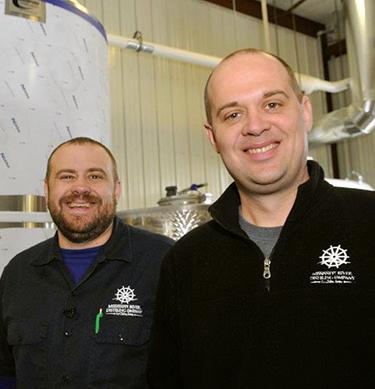
“We had no experience in the industry but saw it as a way to get in on the ground floor of something
pretty cool,” said Ryan Burchett. “We spent a couple of years looking for opportunities for research and training and came up with a business plan. Our thinking was that the worst thing that could happen was that we learned a lot about whiskey, which is pretty cool, too. But after that, we felt we were in a good place to start. From there, our plan just kind of snowballed, and the next thing we knew, banks were offering us the money we needed to make the distillery happen. We both left our day jobs to make booze for a living, opening the Mississippi River Distilling Company in 2010.”
Burchett said that the name gives them a sense of place and references their history, located right on
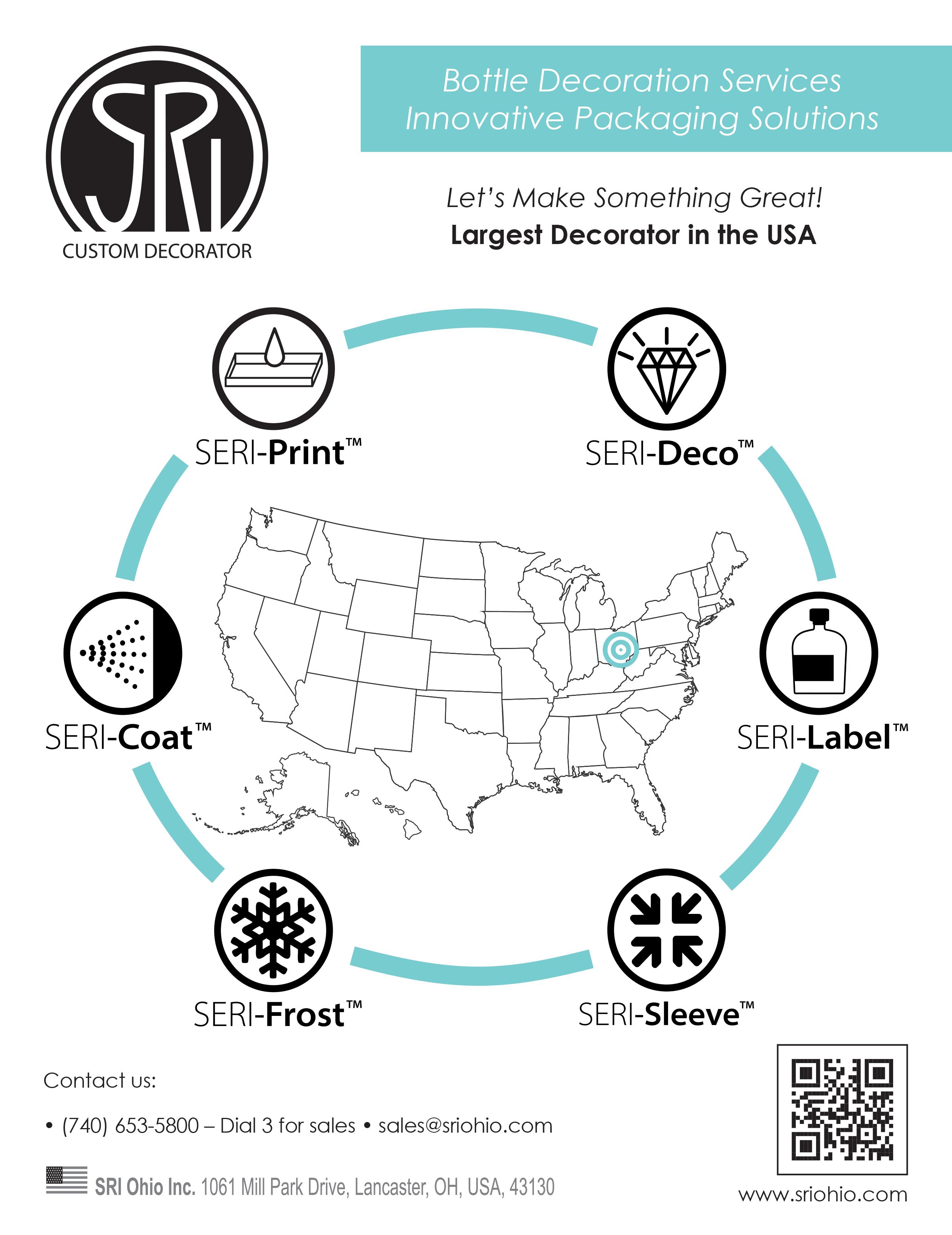
the banks of the Mississippi River. The distillery is located on North Cody Road, just a short distance from where Buffalo Bill Cody, American frontiersman and legend, was born. To honor that heritage as well, Mississippi River Distilling Company’s flagship line of bourbons and whiskeys all carry the Cody Road name.
“Iowa is one of the top alcohol beverage producers in the U.S. that no one talks about because of all the grain-neutral spirits produced here," said Burchett. "But when we started, Iowa was still a regulated state. We could certainly distill here, but we were very limited in what we could do regarding sales at the distillery.
“When we first started, visitors could tour and get two ¼ ounce samples of our product,” he said. “If they liked it enough to buy it, they could buy two bottles per person, per day. We worked really hard over the years to get changes made to level the playing field between distilleries and neighboring
breweries and wineries. We wanted to give visitors the experiences they've become accustomed to when visiting those establishments. When that change happened, we could now sell cocktails, drinks by the glass, beer and wine from our neighbors, and increase our bottle sales. Deregulation with increased types and opportunities for sales and the allowance of tasting rooms led to us buying the property next door and turning it into an event center so we can host weddings and other special or community events.”
“Then, a couple of years ago, we looked at a distillery in Davenport that never really got on its feet," said Burchett. "We were able to take it over in a relatively easy transaction. It was nice from an administrative standpoint, but this location gave us the room we needed for a bottling and packaging line that would've taken up all of our warehouse space in Le Claire. Davenport turned out to be a perfect fit and an opportunity for us to expand. There was a huge warehouse in the back of the property with a loading dock and plenty of space for a tasting room up front. So now, we still manufacture and process everything in Le Claire, but bottling and packaging are in Davenport.”

“We only use the finest local ingredients,” said Burchett. “We know the names of every farmer that grows our wheat, barley and corn. You know, when we started here in Le Claire, we were geared towards tourism, as is the whole town. I mean, American Pickers are just down the street and pull visitors in as well. There are 40-50 thousand tourists that travel through here annually, so authenticity is critical to our success. We noticed relatively quickly that using 50-pound bags of milled corn could get pricey compared to buying bulk corn, so we decided to get a mill and found a local farmer who was willing to provide the corn.
He continued, “After that, we went down the line of our needs and thought, if we can do that locally, why not do the same with other things? Authenticity has been essential to us from the beginning and continues to be one of our core principles because we’re pulling the curtain and letting visitors come right in and see what we do and how we do it. There were only a few hundred distilleries when we started, and now that number is pushing 3,000 across the country.”
Part of that authenticity is being true to their
brand; the Burchett brothers are certainly that. By not trying to push imitations or less-than-authentic processes, the production process used to make Cody Road Whiskey is an open book. It starts at the mash tank, where the grain is milled into fine flour and cooked in preparation for fermentation. After a week of fermentation, it's into the still to concentrate the alcohol through distillation. Burchett takes only a narrow cut of each distillate, ensuring only the sweetest and smoothest spirits make their way into the bottle. The spirits are put into the barrel and then into the barrel room. Each barrel is filled and stored on-site, containing only their whiskey before being deemed worthy of the Cody Road label. Each bottle is hand-numbered with its identifying batch and bottle number so drinkers can go to the website and learn the names of the farmers who provided the grain and what went into the whiskey in their glass.
Burchett told Beverage Master Magazine that he used to distribute across almost half of the United States but has since decided to pull back, focusing on distribution to the Midwest states within sensible driving distances.
“We want to concentrate our growth efforts on local opportunities,” he said. “We want folks to come into our locations, get to know us and then


try and buy our products to share with others. We do have full-time sales reps in Chicago and here in Iowa, but in our 14 years in business, I can put my finger on two distinct spots in the timeline and see two different businesses as we've continued to grow and then change from that growth. All of our processes are performed on-site, from bringing in the raw grain to the final bottling and labeling. We are family-owned and operated, and we believe strongly in taking ownership of and being good stewards of our land, raw materials and water supplies."
The Mississippi River Distillery Company overlooks the Mississippi River, but in this case, the river may not be the thing that demands the visitor’s attention. The star of this show is the distillery's still, affectionately named Rosie, in true "River Rose" fashion with her mesmerizing, eye-catching curves.
The building layout was planned around Rosie, so whether you are inside having a drink in the grand tasting room or simply passing by on your way somewhere else, Rosie is always in view.
“Our still was handmade in Germany specifically for us,” said Burchett. “We chose to go with a German-made still because, at the time, there just weren’t many options for this caliber of small stills stateside. It’s gotten better, but the equipment being marketed at the time was being made for ethanol production or for major, large-scale distillers. In Germany, it’s legal to preserve your grain by distilling it, and there were three main producers in southern Germany that were already making this equipment for farmers. We hooked up with one of them and went to Germany while our still was being built.”
“Rosie is a hybrid still consisting of a German boiling pot and two tall rectification columns that
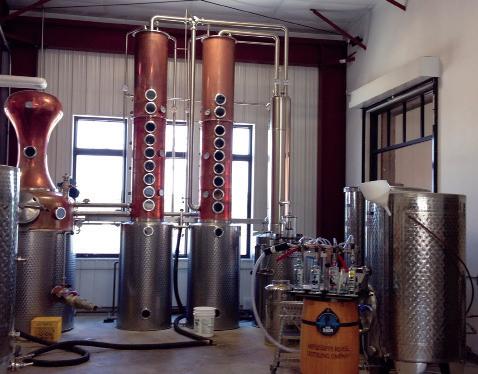
house distillation plates that can produce the purest vodka, up to 95 percent alcohol,” he said. “We can turn off some or all of the plates to make anything from a traditional whiskey in the traditional pot still fashion up to whatever pops into the distiller’s head. And honestly, if you can make it from grain, we’ve probably tried it at least once. The still gives us the flexibility to be creative and have a little fun along the way. You know, we'll make a small batch, and we'll put it out and try it. Sometimes they're great, and we'll bring them back; sometimes, they're a big pain in the butt to make, and we swear we'll never do that again. But to keep local interest, having something different like a special release or seasonal spirit on the menu is always nice.”
“You know, from getting into the bar business to making sanitizer through COVID through branching out into the event center business, we’ve never been afraid to do whatever it takes and pivot as things have come our way,” said Burchett. “With all the things that have come along and popped up, we’ve gotten pretty good at tap dancing around and creating new opportunities for success, including our willingness to try new, trending flavors and spirits. The advantage of being a small business is knowing your strengths and when it's okay to jump in and try something different. Yeah, we’ve done a lot of that and continue to do so.”
The flagship Cody Road Bourbon is the Mississippi River Distilling Company's best-seller. But over the past year, Burchett says that their Iowish Salted Caramel Cream Liqueur has been giving their bourbon a race as their most popular item. Additionally, Burchett makes a batched Old Fashioned ready-todrink that consumers can’t get enough of.
“The Old-Fashioned started as a drink we came up in our bar,” said Burchett. “It became so popular that we started bottling it for a ready-to-drink option, and it’s gone on to be Iowa’s top-selling ready-to-drink cocktail. We mix bitters, bourbon and sugar, put the mix back in oak barrels and let it soak for a month or two. Then, we filter and bottle it as a ready-to-drink old-fashioned cocktail. It’s just one way we look for the opportunities that present themselves”.
“Our employees that started with us from the very beginning are still here, and there’s something to be said about that,” said Burchett. “It’s something to be grateful for and we do take pride in that fact. It speaks a lot about the positive family culture we continue to have and promote here. The only other advice I would give someone going into this business is to figure out your budget as far as what you think your money needs are and just go ahead and double that amount upfront. Save yourself some headaches, settle in and be ready to grow and pivot from your original vision.”
Mississippi River Distilling Company produces about 15,000 cases a year while adhering to its core principle of sourcing all grain from within 25 miles of the distillery. The distillery is located about halfway between Chicago and Des Moines, two miles north of I-80 on the Illinois/Iowa border. Mississippi River Distilling Company offers locations for private events, opportunities for charitable giving and a private, customizable whiskey program to create and distill your own whiskey.
For additional information, check out their website or contact them at:
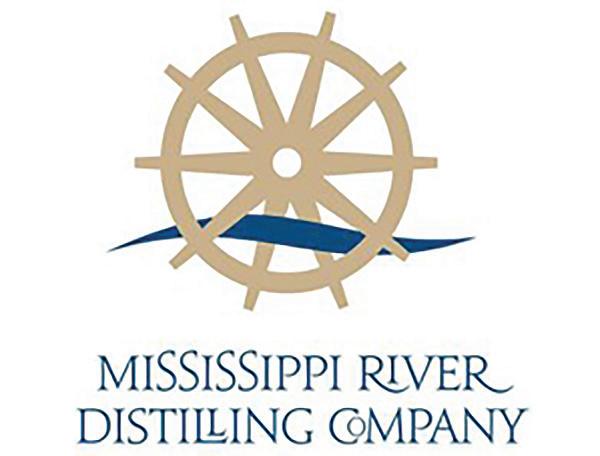
Mississippi River Distilling Company
303 North Cody Road P.O. Box 801
Le Claire, IA 52753 www.mrdistilling.com 563-484-4342 info@mrdistilling.com
